The usual topic is how to make from cardboard. What can be made from cardboard
Master class on making a house-teremka for a mouse-hole Manyuni
PVC was chosen as the base material. Reasons: lighter than plywood, stronger than cardboard, well cut and glued.
I want to make a house with a blank facade and glazed windows, in this case I am not interested in making interior decoration. Therefore, in rear walls holes so that when transporting the house you can put staff and dolls there, and the insides are not decorated in any way.
The design consists of two separate parts, also for ease of transportation.
In the future, it is planned to select such materials so that the decor does not break or scratch during transportation and so that I do not have to carry the house like a "crystal vase". I always think about convenience and I am not ready to make some sacrifices on the altar of beauty.
Front view.
Back view.
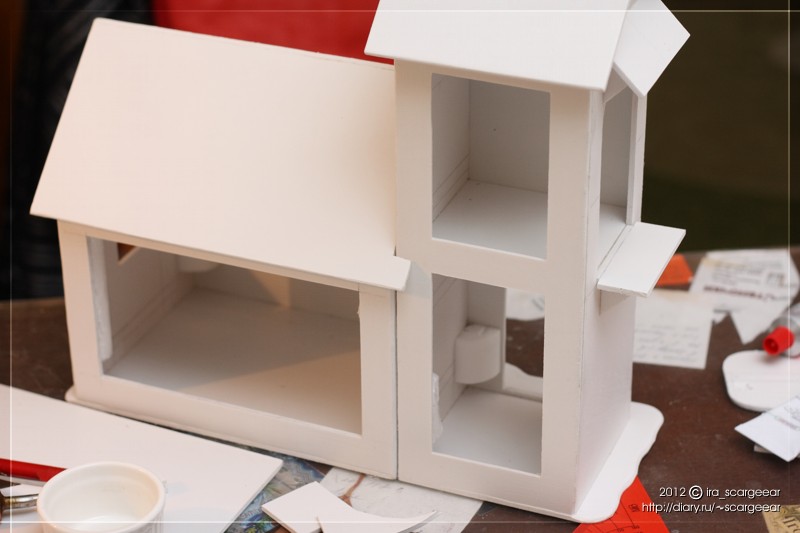
Before painting, tests were carried out on a piece of plastic; it turned out that even with sanded PVC, acrylic peels off if it is scratched. Therefore, I decided to paste over the house with textured paper (toilet paper, as you understand, but you can also buy corrugated paper, the difference is only in show-offs). I tore it into small pieces and pasted it in random order so that the texture lay in different directions.
Glue - carpentry "Moment": since the guy introduced me to this glue, I look down on PVA a little. Joiner's is about the same, but it dries many times faster.
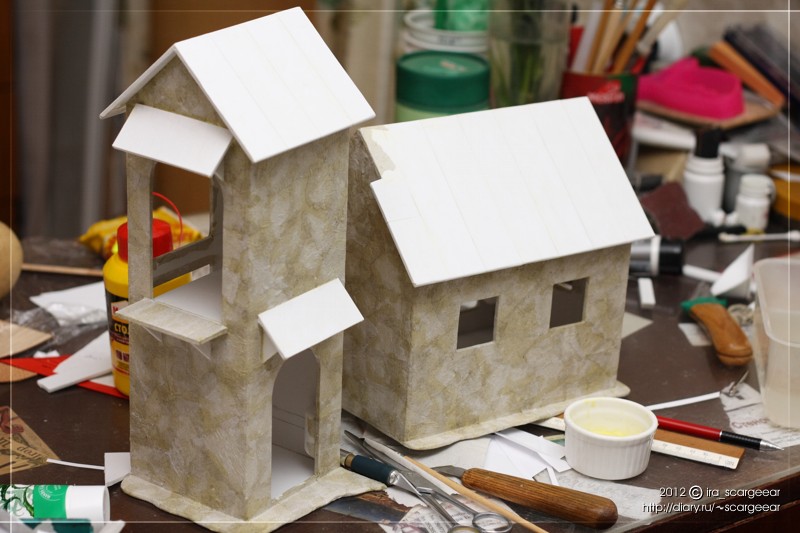
Closer invoice:

Pasting the walls of the house took me three evenings Painstaking and dreary work. All ends are also sealed, with a bend inward.
The roof was pasted over with simple office paper, stripes, which saved me a lot of time. There will be tiles on top, so this paper will not be visible.
Now we paint. Paints - Maimeri Acrilico in tubes, they have excellent hiding power, good mixing of colors, a slightly pasty consistency, and most importantly - the price work, and I bought a basic set of colors.
The walls of the house are painted with white acrylic, the roof is black. I already wrote that I dig hard on diorama sites, and they give a black base for all sorts of textures, so I decided not to reinvent the wheel and do as they say.
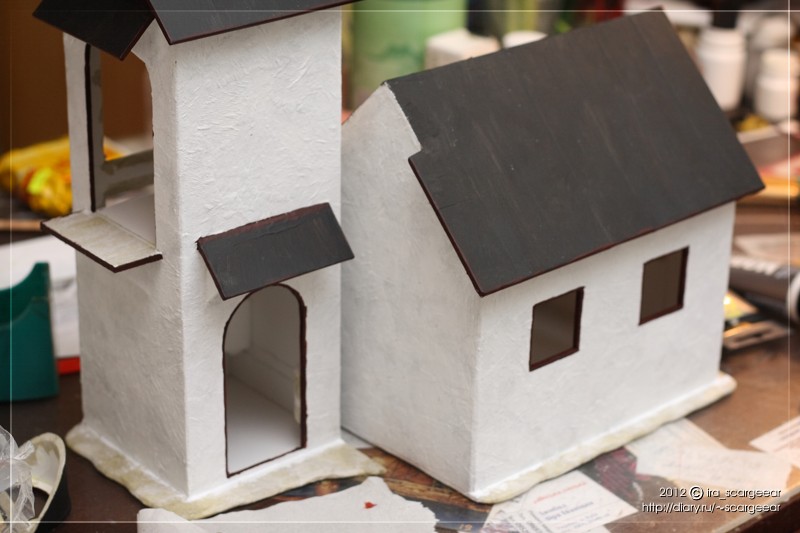
The white color, even in combination with the texture, turned out to be too flat, so I decided to add shades. I did it completely random)))
The first shade is pinkish-brick, acrylic is diluted to the consistency of thick sour cream, applied with a brush a couple of strokes to the surface and quickly rubbed cotton pad(without wasting a second, because acrylic dries instantly!) Dioramas paint with oil, it dries longer, but I don’t see the point in buying oil as well. As a result, we have colored protruding sections of the texture.
The second shade was selected already in a pair to the first, diluted the liquid-liquid greenish-brown color and washed the surface. Wiped off excess with a cotton pad. Places around the frames, under the roof and near the ground were more soiled. My Quenta house is in the woods, by a swamp, so it's supposed to be green with moisture, overgrown with moss and all that.
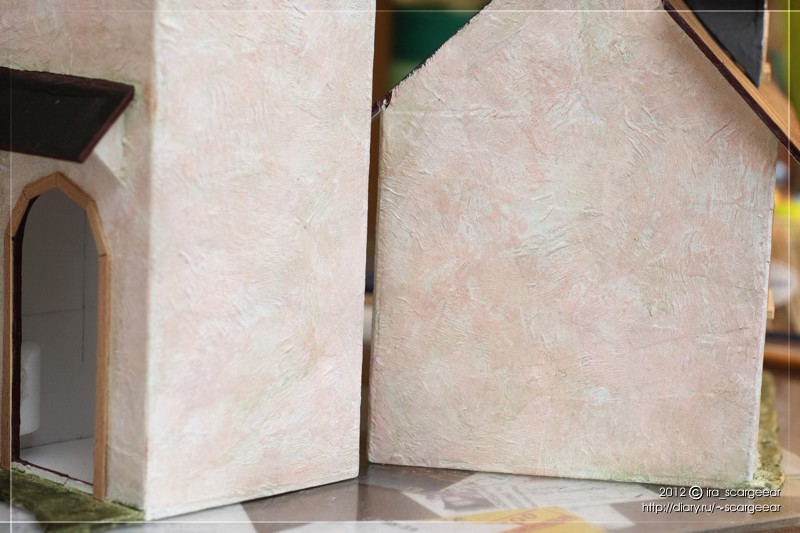
Both colors are clearly visible here.
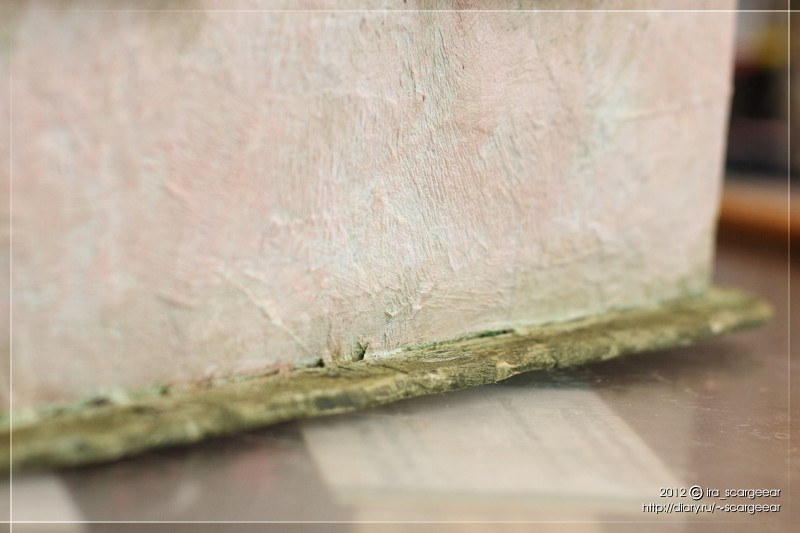
Now glue wooden frames. I got the veneer because of the pull, but in general they buy it in shops for modellers. I bought a 5x5 lime rail there.
Glue - all the same carpentry "Moment", glues perfectly.
The guy offered to cut the rails with a laser, which would save me a lot of effort, but in this case, the more clumsy the better
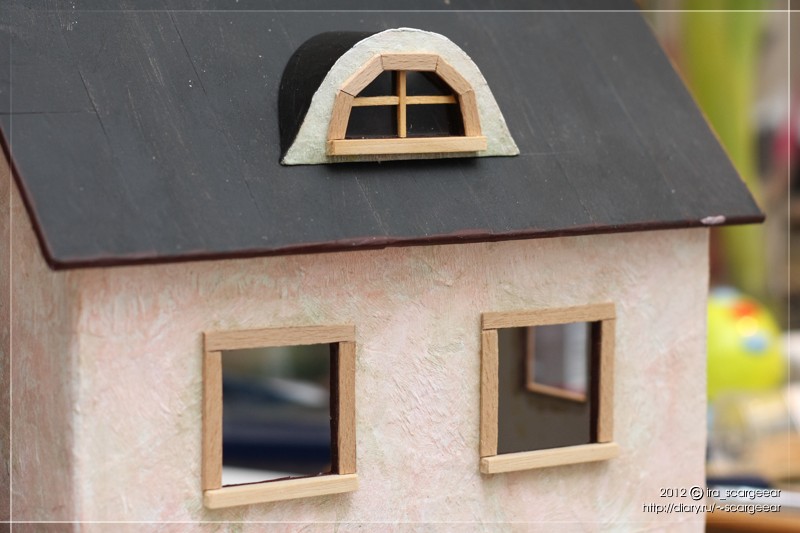
Here we will have a balcony. We glue the frame and the wooden floor for now.
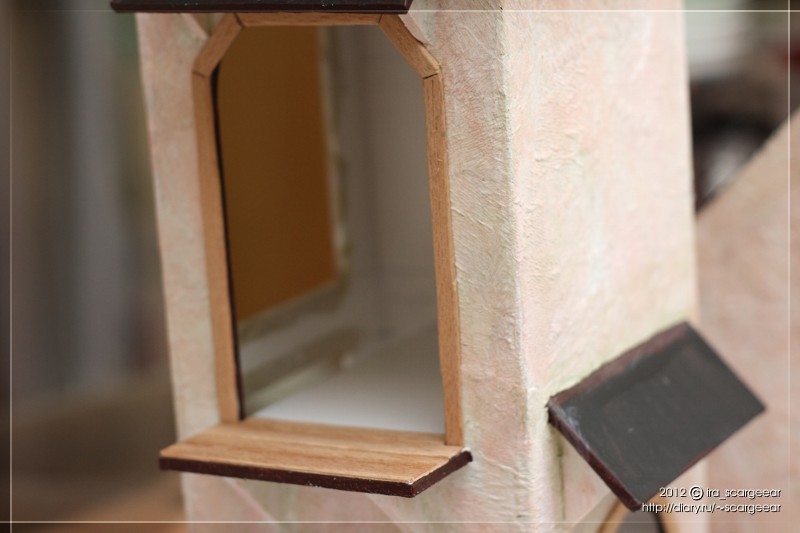
PART 2
The balcony is covered. It consists of square sections (linden) and toothpicks (bamboo). Holes were drilled in the planks for pins from toothpicks, and all this was assembled with carpentry glue.
The floor of the balcony is covered with veneer.
All wooden parts are opened with cherry wood stain. Alcohol stain, the darkest that was (specially requested not the most smelly, they come on a different basis). I really liked working with her: she perfectly impregnates the material and flows into the cracks.
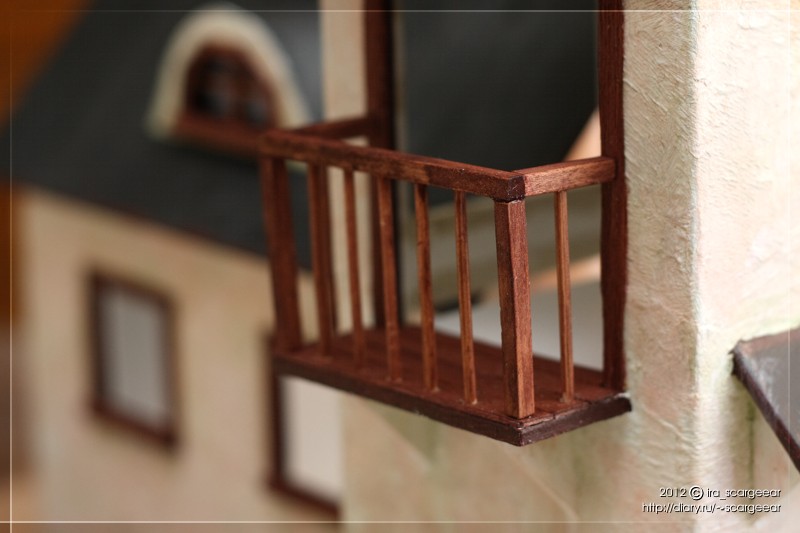
I'm going to tiling. Pieces of cardboard 1x1.5 cm, rounded on one side. Spent a lot of time carving this stuff with my hands
I thought about how long it would take to paint all this with acrylic, especially the ends of each tile. I was horrified. I tried to paint cardboard with stain - suddenly I got an excellent imitation of pine bark. And random spots of glue resemble traces of resin
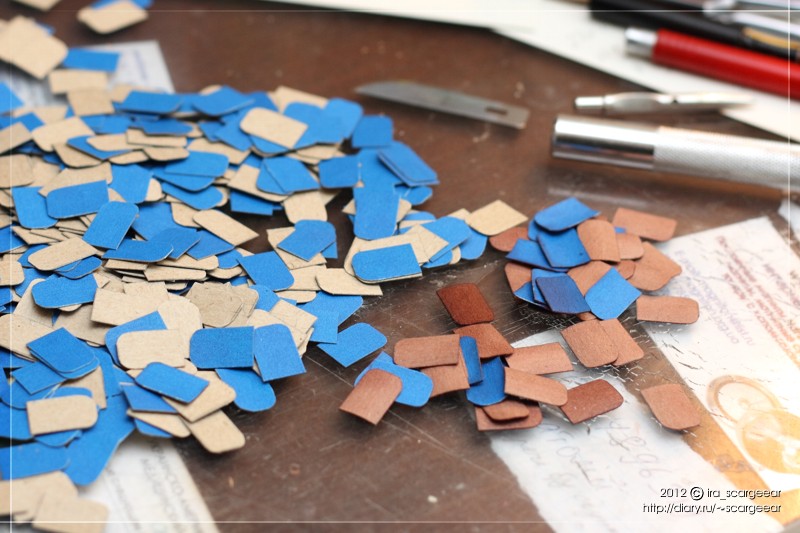
I glue the tiles in rows, each next I impregnate with stain.
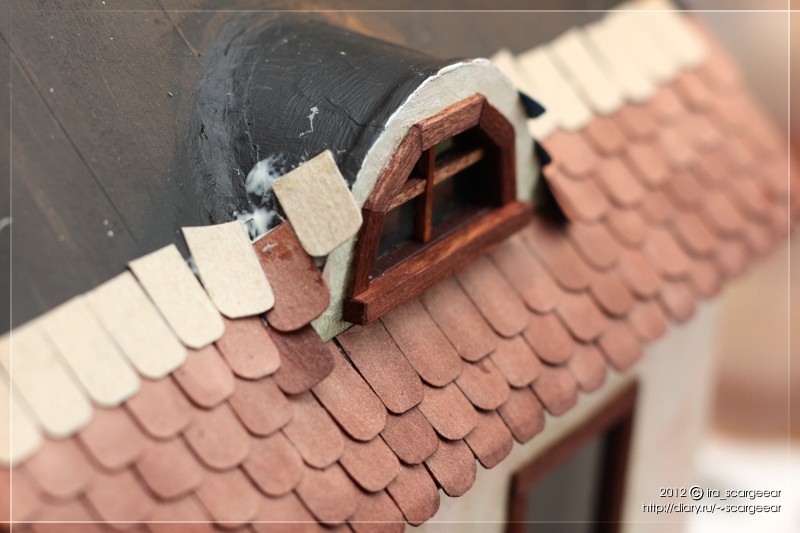
Everything is glued on. I also spent a lot of time - but not as much as I could))
The pipe is made of Mungyo Sculpt Dry terracotta, grooved wet. Somewhere crooked, somewhere a little cracked - it's all to our advantage. The tile is also glued unevenly. In order to bring out all these nuances more clearly, the roof and chimney will still need to be painted additionally.
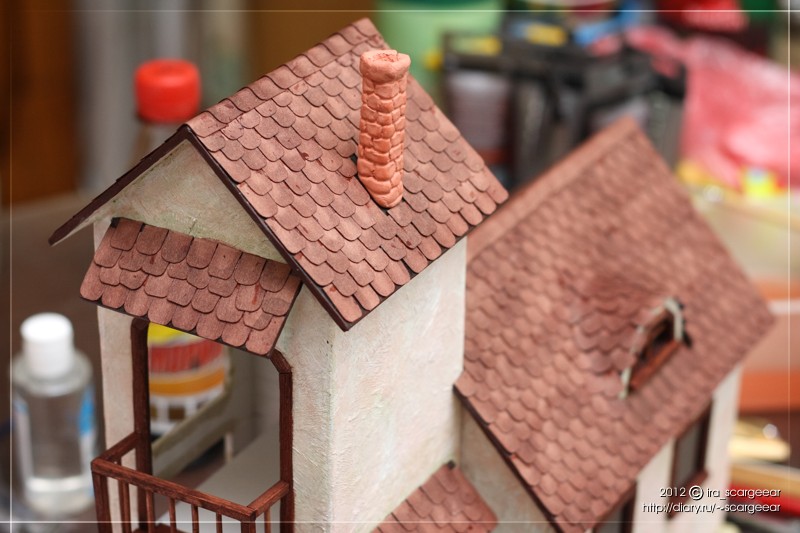
The doors are also made of veneer, pasted on a cardboard base (painted black, like the roof). I additionally applied relief with a needle.
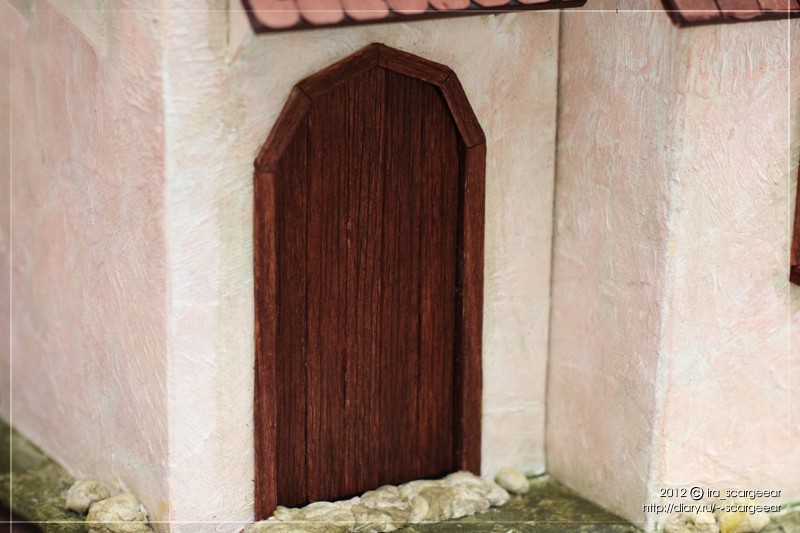
Blanks for stones - from lumps of toilet paper. Although I have real stones, but it will be lighter in weight.
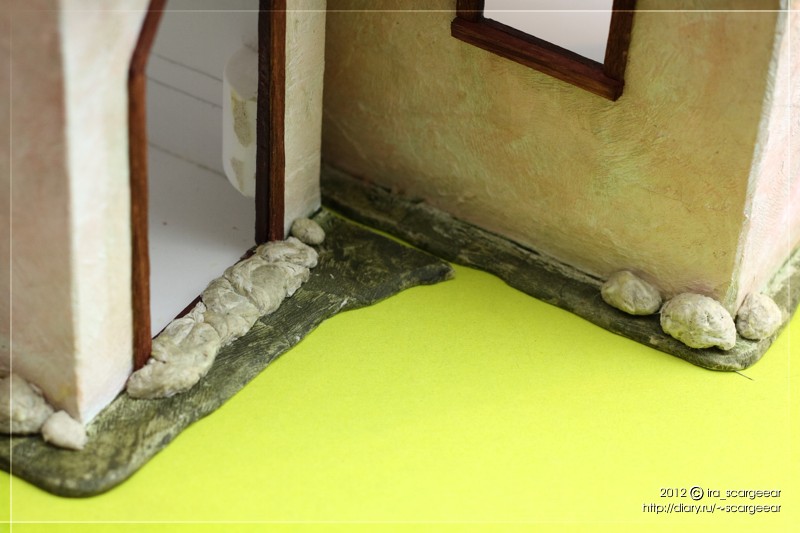
PART 3
I make shutters. I cut pieces of cardboard, paint the plane under the shutter black, the plane to the wall - white.
I cut veneer boards, apply relief with a needle.
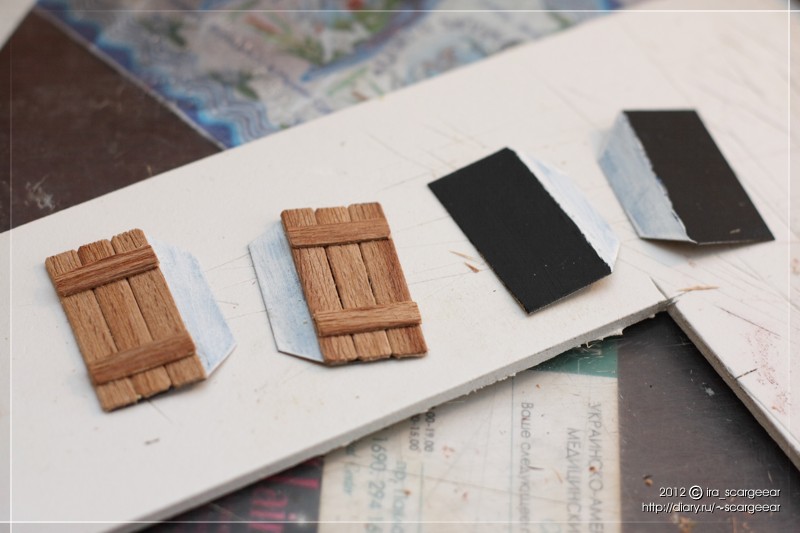
The shutters are stained and then glued.
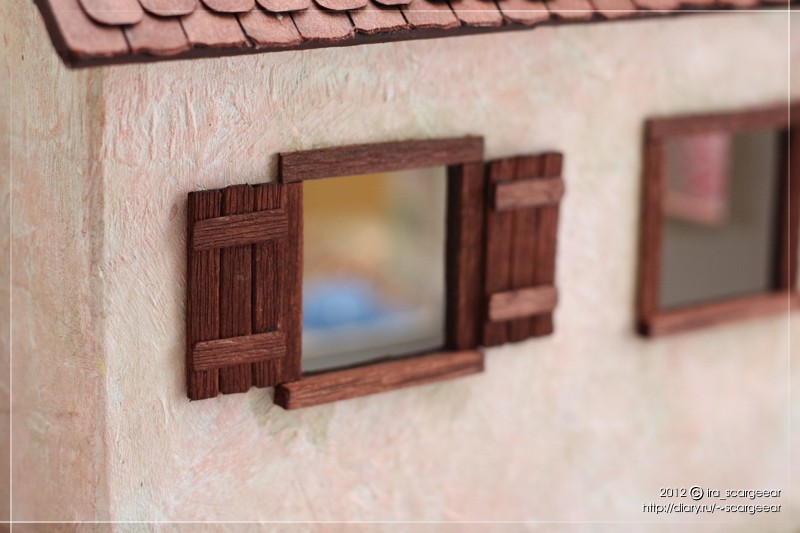
I build frames. Pieces of transparent acrylic are glued with a strip of paper along the end, so that everything else sticks to them more reliably. Then again I cut the veneer and glue it.
The slats on the small windows are made of matches, on the balcony window I had to take a thin round stick (torn out of a bamboo napkin) and cut off half to get a flat side.
She took a long time with shutters and windows, only frames with slats made the day.
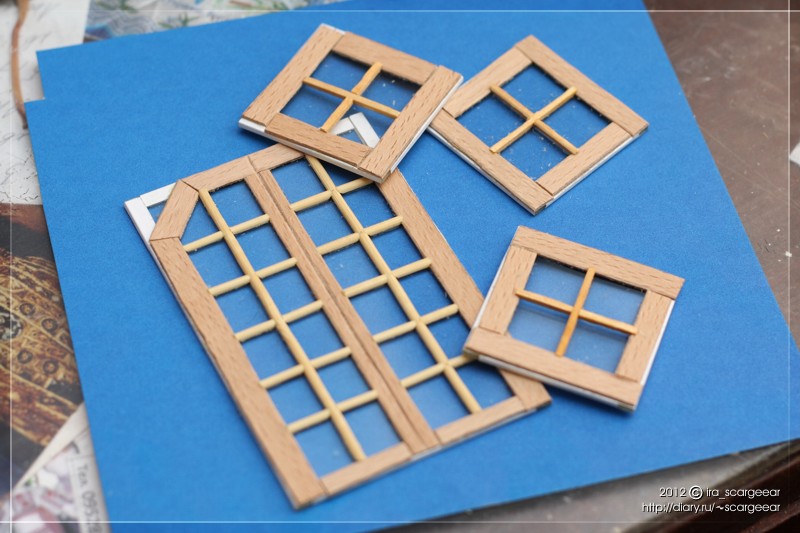
The windows are glued to the house from the inside.

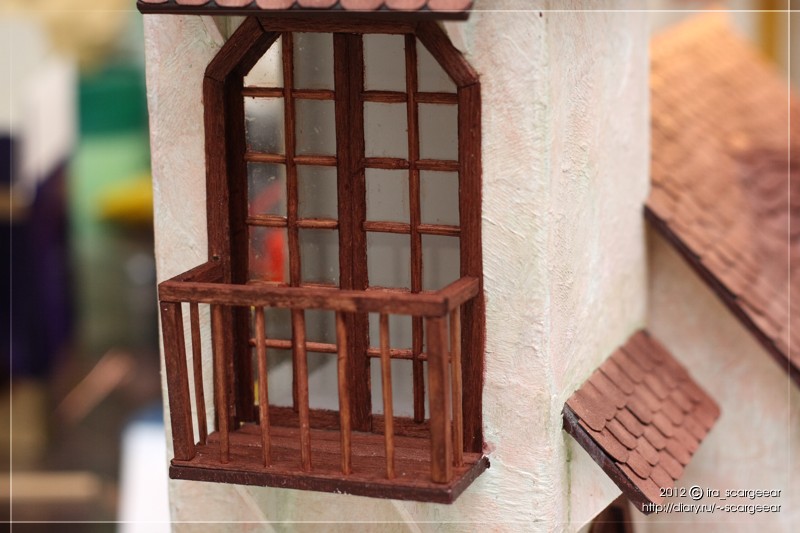
I paint tiles. The principle is this: terracotta color and I paint each tile separately in a chaotic manner - about a quarter of the total. I added white to make the tone lighter - again I paint a quarter of the entire tile. Kneaded more dark color- I paint the rest.
Due to the fact that some tiles are painted more densely, others are thinner, and four colors, it turns out such an artistic mess.
I finished painting some tiles with approximately the same batch, but less brown, and more white and black - a more gray shade came out.
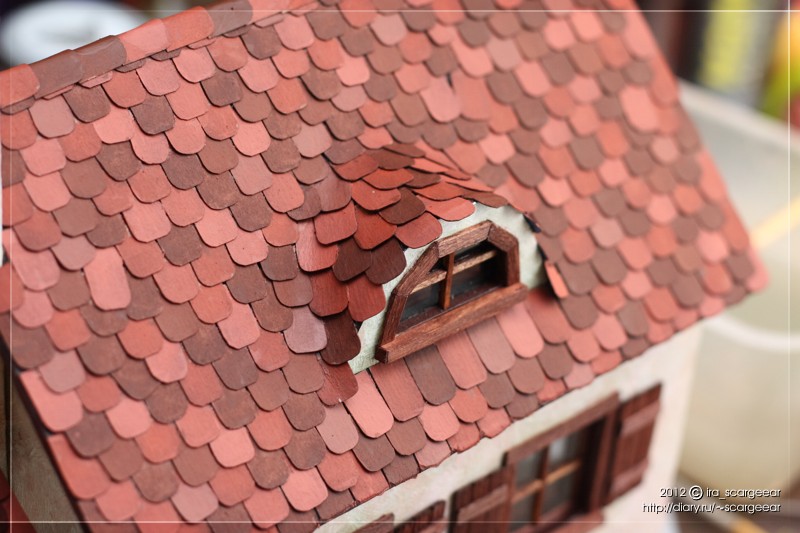
I also painted the pipe with liquid diluted black - it immediately took on a shabby look.
The chimney hole is painted black.
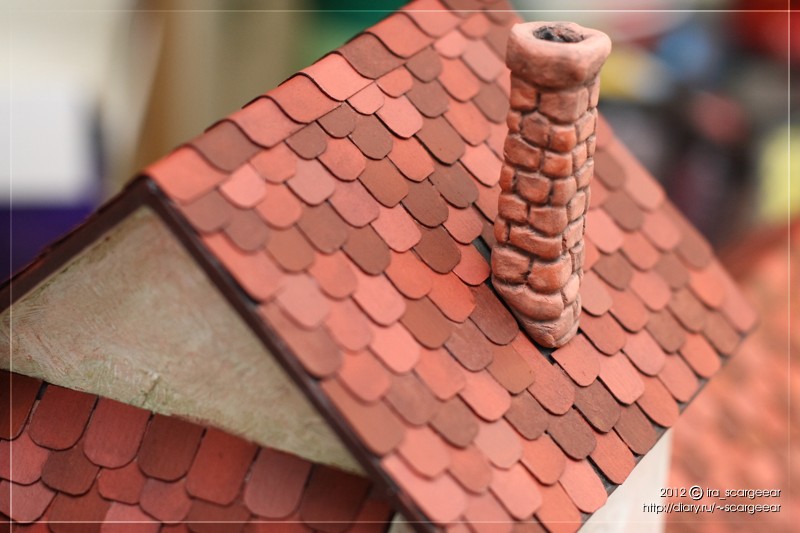
She painted the ground thicker, several shades of green. Also painted the stones. The dark tone is the base, the lighter ones are on top: gray, brown, green, light gray spots of lichen. Toilet spools are now unrecognizable))
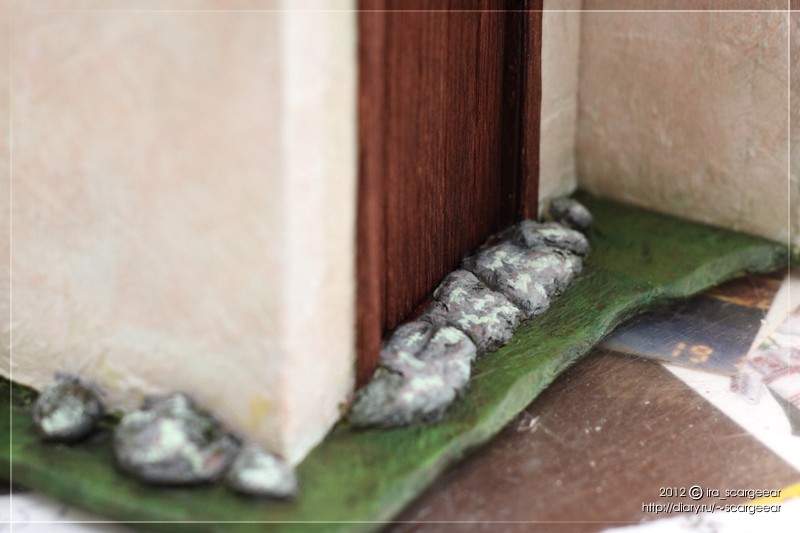
So, we have a beautiful new tile. The house is located in a humid area, so I will do lichen not only on the stones, but also on the roof.
I take an ordinary kitchen washcloth, I breed light gray with green tint paint and randomly poke a washcloth into the tiles. It turns out well.
Please note the absence of a pipe. I planted it on two toothpick pins, two holes in the roof. Roman advised to leave it removable - for ease of transportation))

The tiles are still too new, and the lichen stains could do with some muting. I interfere with the gray-brown-green color and poke with a washcloth, even thicker than before.
The roof is the bomb! Compare with reference.
I painted the pipe with the same colors as the tiles.
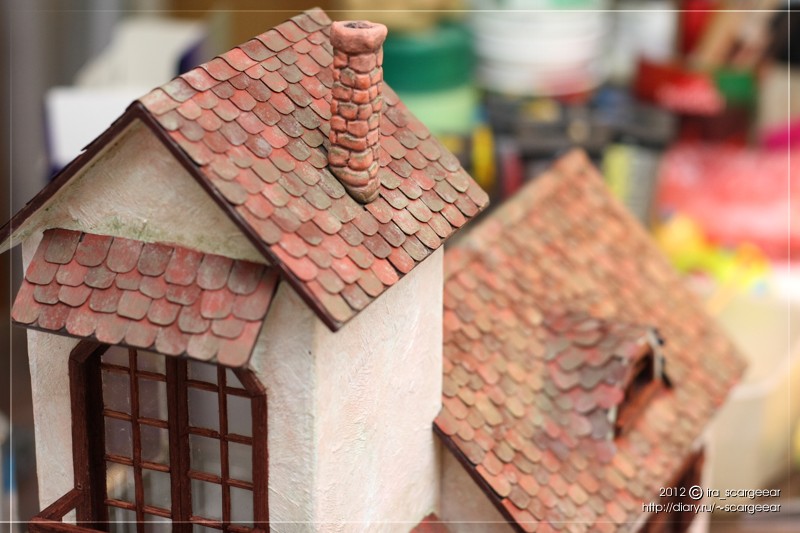
Now the shutters and frames look too new compared to the roof. I will spoil them too. The tree turns gray from the sun and water, so I breed gray paint and dirty everything wooden elements on the protruding parts, I do not touch the recesses.
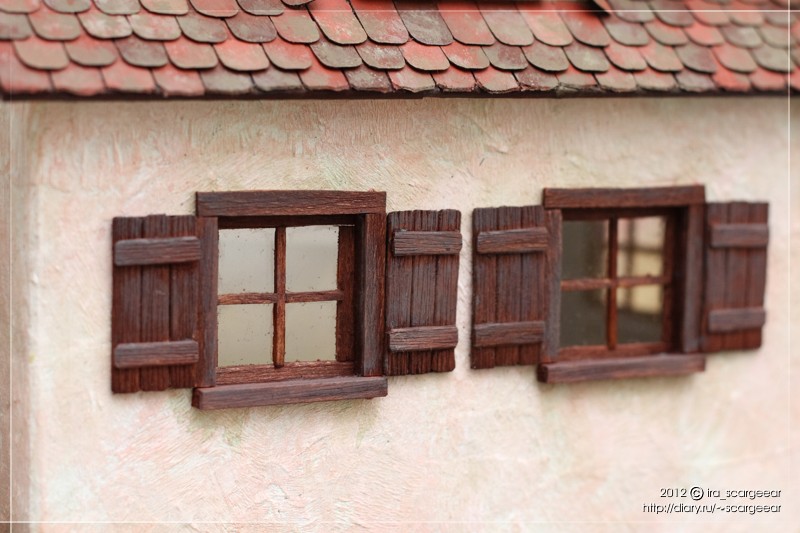
The same with the balcony, and with the door.
Here you see copper rails, hinges and a handle. Everything was done using standard wirework techniques, slats are highly flattened wire.
Copper needs to be aged, I will deal with this later, so the elements are still hanging on parole.
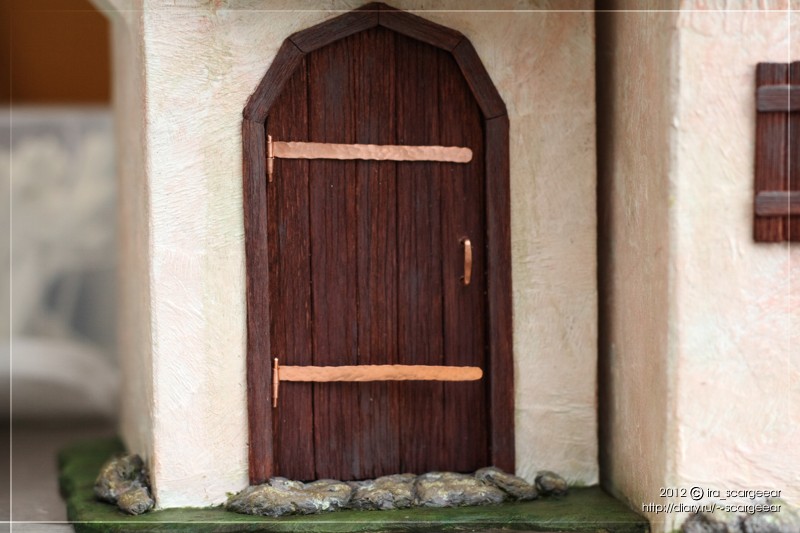
PART 4
I think moss deserves a separate post.
Diorama makers often find materials for their compositions in the most unexpected places. That's how it happened to me. One video tutorial prompted me to this idea, in which trees were made with a crown of wood shavings (this happens if the floors are cycled, very small).
Here is the kitchen scourer that I used to texture the roof. The green abrasive part is made up of fibers that perfectly imitated moss (as it turned out). I hoped that something would work out for me, but I did not count on such a good result.
Still, it is better to take a green washcloth, because acrylic does not paint over absolutely everything.
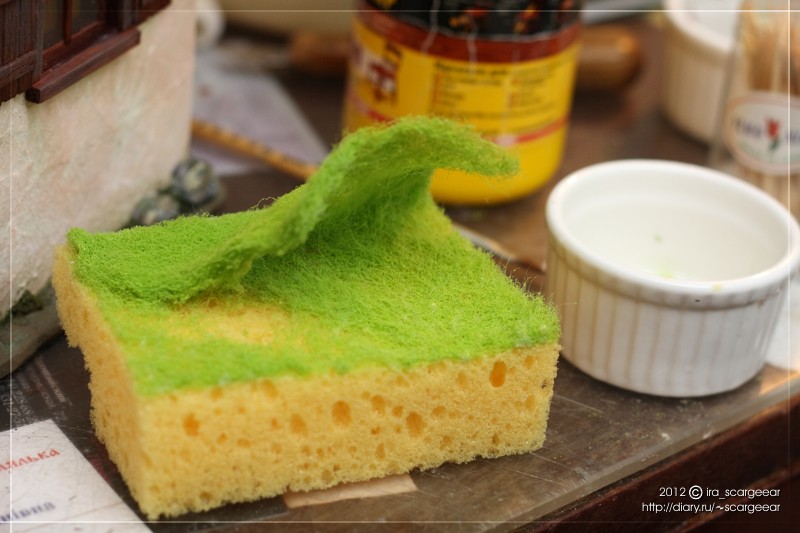
I tore off this part, chopped it into small pieces with scissors.
Mixing paint in a jar desired color- this is the same Maimeri acrylic. I added about a teaspoon of Moment wood glue there. Throw in all the pieces and mix well.
The term of work with such a batch, until it begins to set, is up to half an hour for sure. There is no retarder in acrylic, glue plays its role. I had two of these batches. And I interfere, and separate the fibers, and stick - all with these two toothpicks, it is very convenient for me.
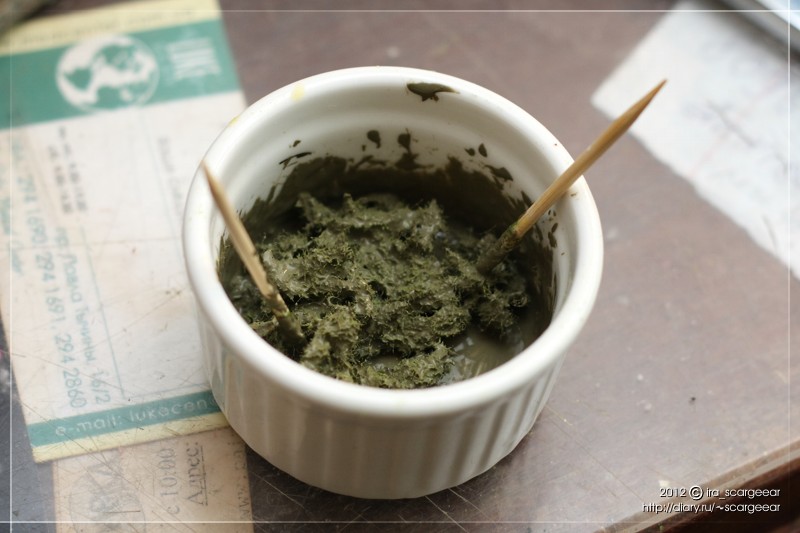
Result:
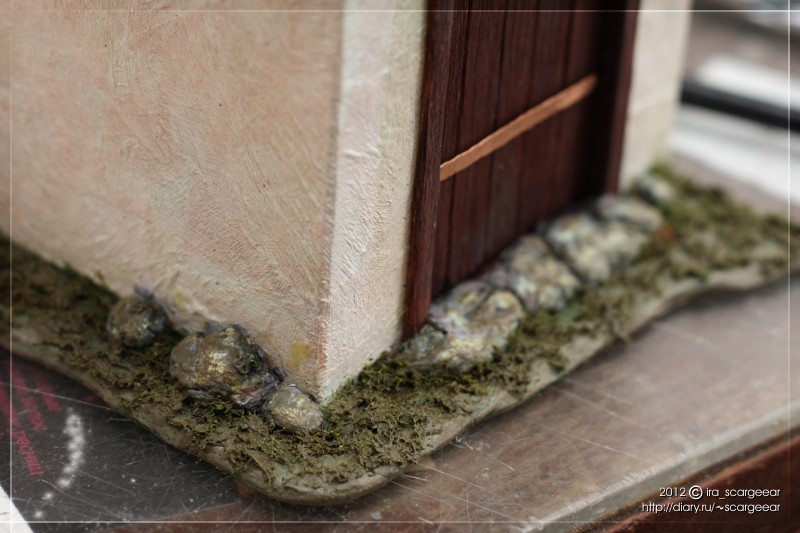
Roof. Live is even better, I'm still a photographer.

Moss keeps very well thanks to a large amount of high-quality glue with a plasticizer. You can grab your hands, etc.
PART 5
The flower boxes are glued together from PVC, like the frame of the house, and pasted over with toilet paper. Top painted with acrylic: brown paint in a continuous layer, and then black paint with a "dry" brush. It turned out such a multi-colored texture, and thanks to the relief of toilet paper, it generally looks like a tree))
Copper holders are inserted into holes in the wall. They hold tightly and will not fall out at the exposition, but I will take it off for transportation.
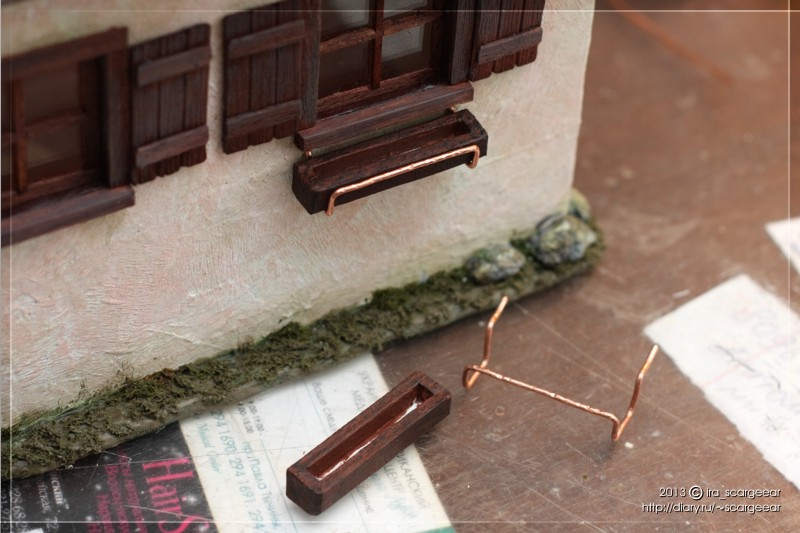
I repainted the pipe to match the color of stone, not clay.
Pieces of Icelandic moss, pine needles, etc. are pasted on the roof.
Lantern: glasses - a thin acrylic film (it was a badge from the exhibition), vertical strips - ordinary office paper, bottom and cover - PVC. Everything is assembled with superglue, because otherwise the acrylic will peel off. Inside is a piece of toothpick instead of a candle. Everything is painted with a variety of acrylics: the base is dark brown, the accents are gold and black paints.
The flashlight is also held in the wall by a hole. At first I wanted to hang it on the right end of the house above the window, but since that facade would be practically invisible at the exposition, I changed my mind.
I'm still in no hurry to patinate copper elements: what if I want to do something else?

I'm going to the swamp. A piece of acrylic 3 mm thick (which was) Roman cut me with a laser. It was possible to cut it out with your hands, but there is less risk of ruining a good piece of acrylic.
Under the acrylic is cardboard. I only had green, so I had to paint it black.
The edges of the swamp are covered with toilet paper to keep the whole structure together. Next, painting the edge: a dark brown-green tone as a base, lighter ones are applied with a washcloth. Also, the surface of the swamp was tamped with a washcloth to imitate duckweed.
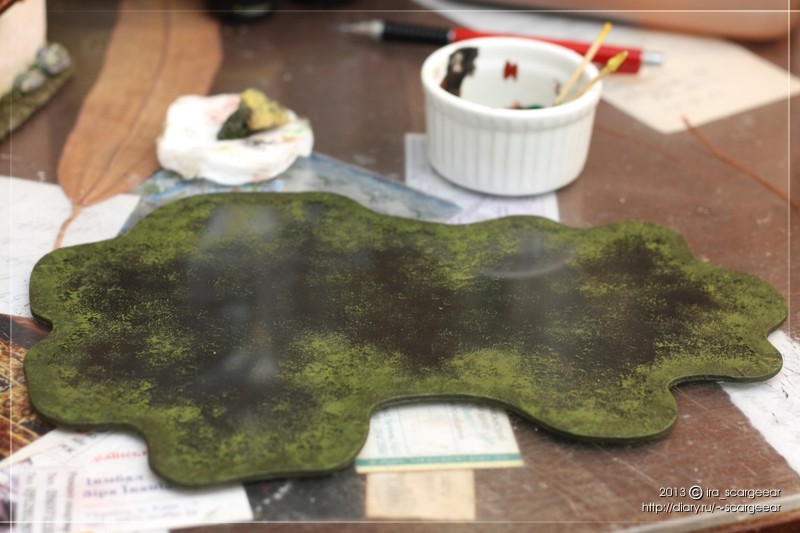
My first experience of sculpting flowers from Claycraft Deco)) I bought it in Handmade Studio. The scale for this work is a little abnormal, the diameter of the water lilies is 1 cm, which is approximately 1/6 of the format. Blue flowers - 4 mm in diameter. even mine fine motor skills not always enough for desired result, But I'm trying. That yellow one is blanks-middles for the following flowers, I have not yet figured out which ones.
There are a lot of Deco courses on modeling in Russian. both material and technology are patented, but we are not looking for hard ways))
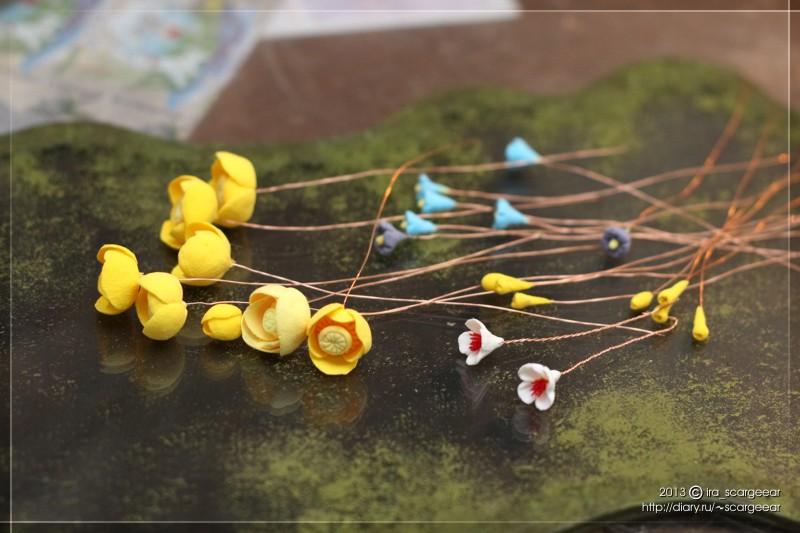
PART 6
I stuck water lily leaves. They turned out the second time: I wanted to make it so that you could just put groups of leaves on the swamp, and not glue them tightly, this is necessary for ease of transportation. So, the bottom side should be flat. The first version of the leaves was thick enough, but it was warped (I did not throw the leaves away - maybe they will come in handy, they lie on the sides of the swamp). I googled the Deco properties: they still write that it warps when it dries (((I had to come up with a workaround: what if the leaves are made thinner and glued onto a piece of cardboard? No sooner said than done.
This is the limit of paint mixing, at which the clay does not fall apart into pieces when sculpting.
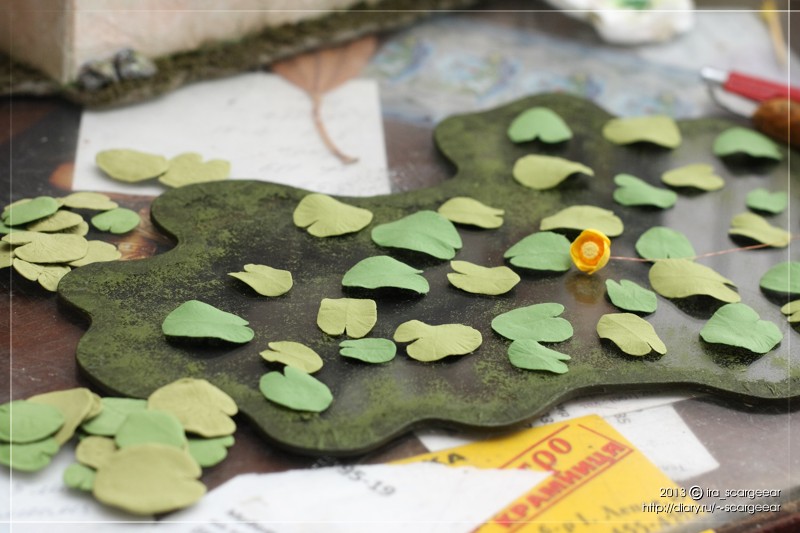
Seen here different stages process: on the left - a cardboard template for leaves, in the center - a glued island from the inside, on the top right - another one on the front side, on the bottom right - a finished island of leaves, already pasted on cardboard. As you can see, it is quite flat.
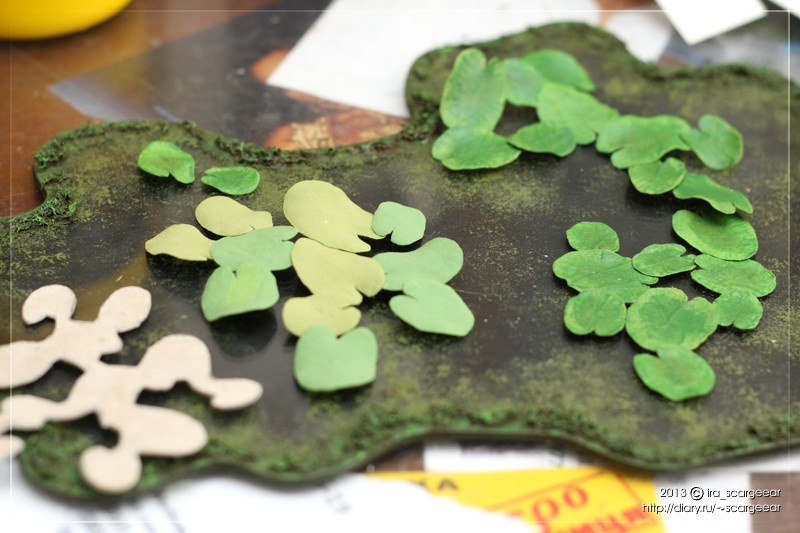
I painted the leaves in a dull color, because the water lilies are very monochromatic (and why did I different colors sculpted, I don’t know myself?), glued water lilies. I added moss along the edges of the swamp, tinted it with different colors.
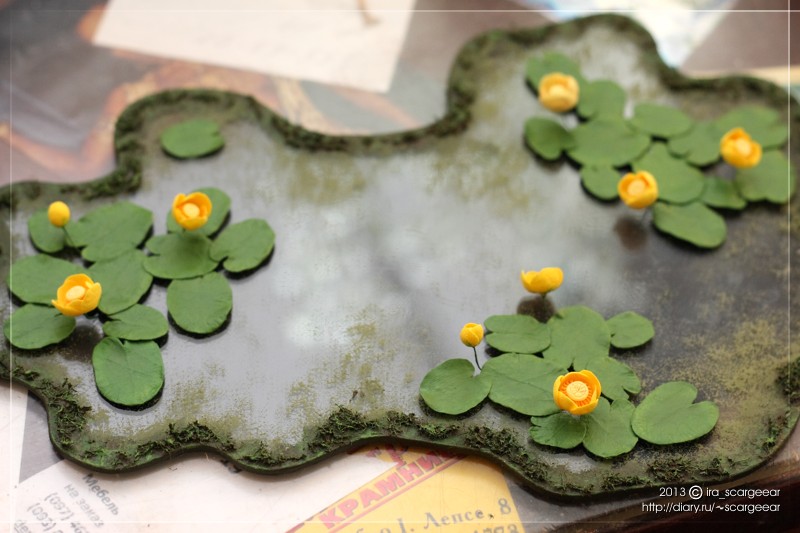
And this is strawberries in boxes. It took me a lot of time, because the flowers are molded in stages. I successfully adapted the eye of the needle to form the middle of the petals, and generally learned a lot of new things))
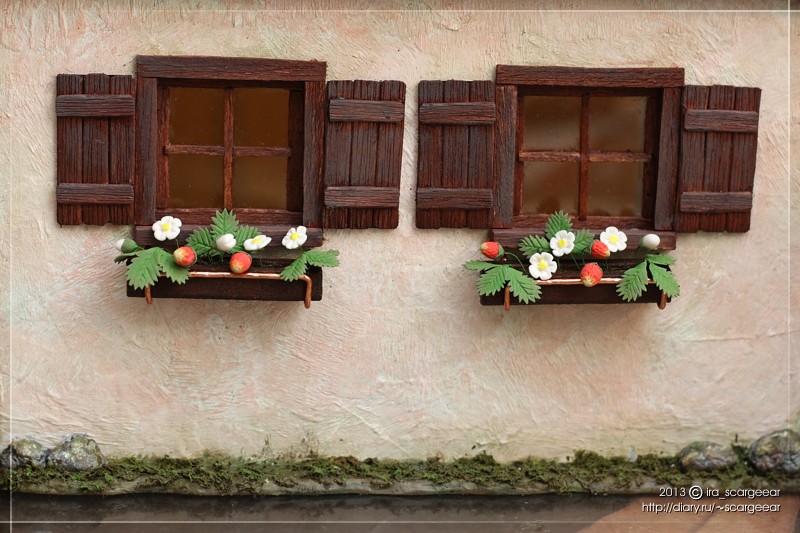
The process looks like this:
1. I make flowers. I knead the green paint into the clay, sculpt the leaves.
The details are dry.
2. I cut the wires, with one I bend the loop at the end - this is under the buds and berries, with the other - a circle bent perpendicularly, under the flowers, and I leave part of the wires like this - this is under the leaves.
3. I glue the flowers and leaves on the wires, I stick the buds raw on the wires with a loop. Mixing red paint. I form berries, poke needles with an eye to give texture, put them on wires.
The glue dries. I look forward to complete drying. Freshly molded parts also dry.
4. I tear off the buds and berries from the wires, dip the wires into the glue, stick them back.
The glue dries.
5. Again I knead the green clay. On flowers, berries and buds I form blanks for sepals.
6. While the sepals are drying, on the already dried leaves I cut out the teeth with a dummy knife. I collect leaf blanks in threes, twist the wires.
7. Gently tear off the sepals, cut out the cloves, glue them back.
8. I paint the middle of the leaves in green, trying to make a gradient to the edges. I paint all the stems and legs with acrylic, it fits perfectly on the wire and does not crack when bent. I paint the noses of the berries in light green and the centers of the flowers in yellow.
In short, I fiddled with all this for more than one day)))
Time to plant our strawberries! I glued the leaves to the bottom of the boxes. Instead of earth, I stuffed the same moss on glue into the boxes and stuck flowers-berries. Beautifully arranged everything and waiting for the glue to dry.
Ready!
PART 7
I stuck different leaves and flowers, painted the wire stems with acrylic, glued the leaves.
Stems for reeds - the same wire, but with unremoved insulation (green), extracted from a twisted pair. On top it is painted with acrylic, then a reed peduncle is stuck.
Reed leaves were made like this: a sausage rolls on a flat surface, then it is flattened on the handle of a brush - this is how we get a semicircular shape in cross section, it bends in the right way and is put to dry. The bottom of the sheet is made more embossed, the top is flatter.
You can see blanks of leaves for ivy on the left, on tubes of paint)) After drying, they will not be flat, but semicircular. From the blank you will get two leaves.

The ivy stem was made from very fine wire, the leaves after drying the blanks were cut with a breadboard model. Here are three piles different colors: the lightest leaves will be at the ends of the branches, darker - at the base.
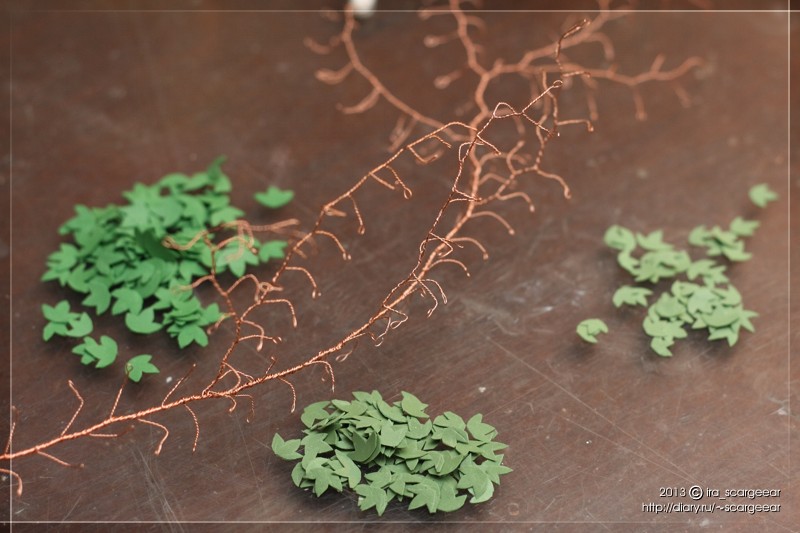
Flowers planted under the house different varieties and species)) For the leaves, I also kneaded clay of different colors, some were also painted.
Made on the windows and balcony door curtains, since the interior was not made - in general, so that it is not very conspicuous))
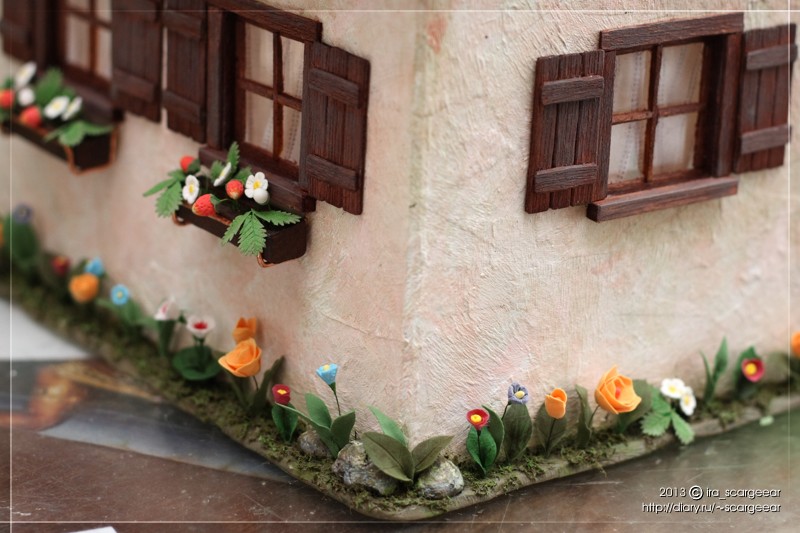
Ivy on the house.
The technology is still the same: we paint the branches with acrylic, let it dry, glue each sheet on PVA. It is fastened to the wall with small wire staples, under which holes are pierced in the wall with a needle. On the leaves, I walked a little with a brush to give heterogeneity.
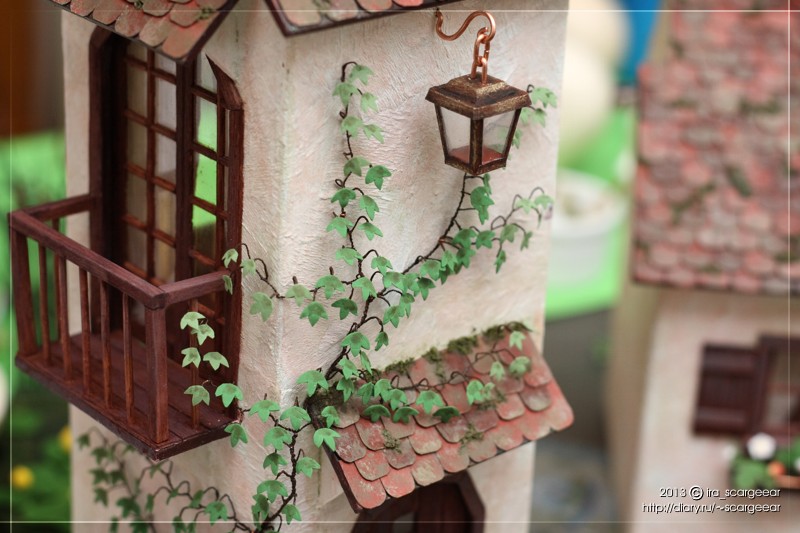
A little more general.
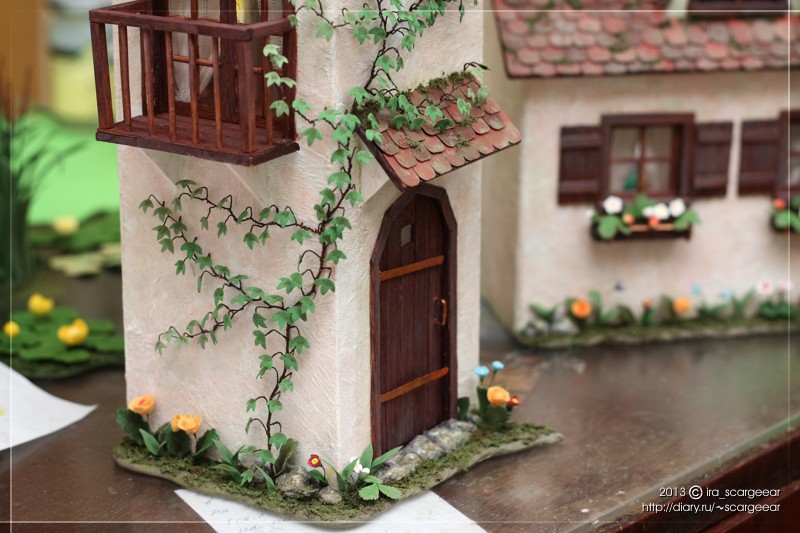
I also decided to make the reeds separate elements, for ease of transportation. The bases are cut out of PVC, glued with toilet paper, painted, then holes are stuffed with an awl, wire stems are glued into them. I also glued individual wire pins to individual leaves.
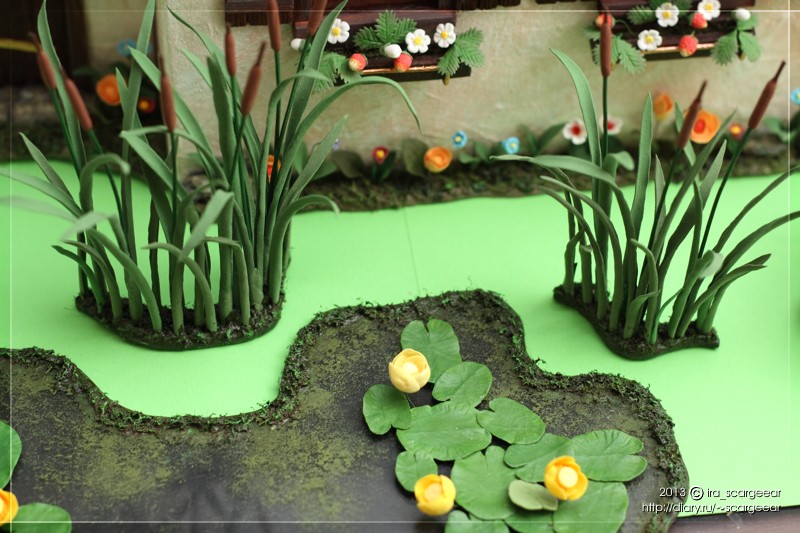
Inserted with minimal clearances.
The bottom of the "islands" with reeds is decorated with grass from a washcloth, like the shores of the lake.
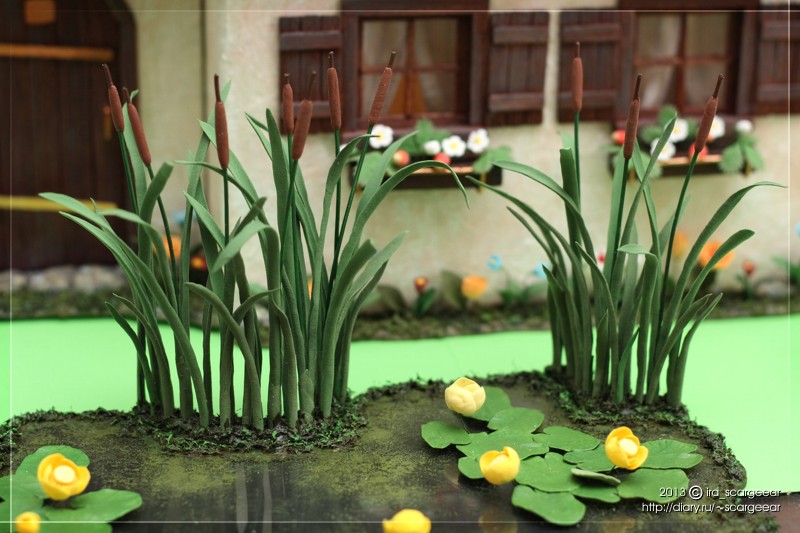
That's almost everything)) You need to literally finish some little things, add to the location household items to give the house a residential feel.
PART 8
Stools. Made of veneer and square-section slats (the same ones used to make the balcony railing in 2 parts), stain on top, subsequent sanding. I tried to paint them with acrylic, but it did not work out.
Two gray byaki are blanks for pumpkins: toilet paper, thread, glue. Made to save material, although they could be fashioned entirely from Deco.

The pumpkins are ready. I tinted the depressions a little with brown paint for a more lively look.
A bench made of the same materials as the balcony: there were still a lot of these square slats, it was a pity)) Thin crossbars - from loose bamboo rug.
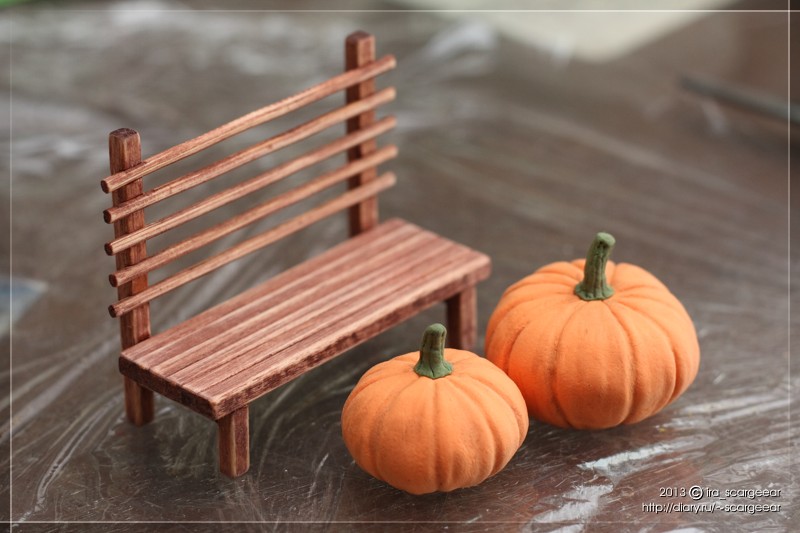
Mushrooms! I did it for several evenings: I stuck a bunch, walked around and around - it seemed a little, stuck more, and so on several times)))
The container for mushrooms was also made of bamboo mat: there were two types of planks. Paper hoops, assembled with glue. The bottom is triple, slats-cardboard-slats, sits in a barrel on glue.
Deco bowl.
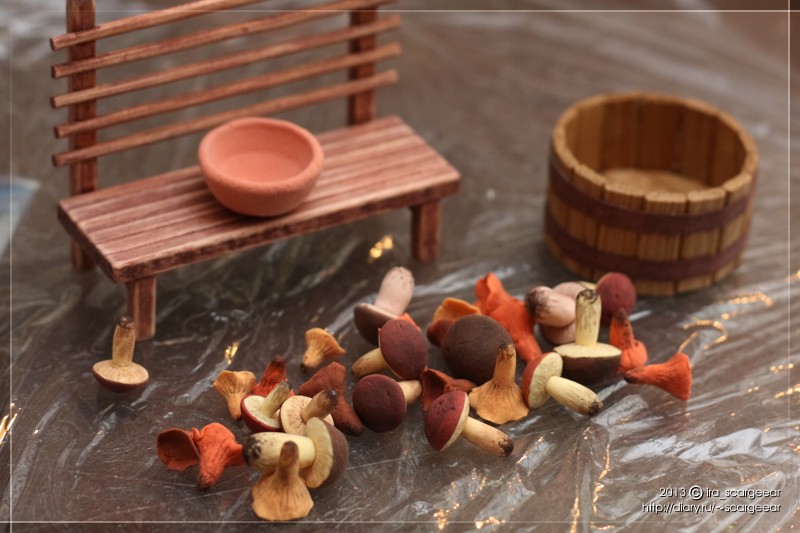
They also have mushrooms on the balcony under the roof. She laid a linen rug, made another jug from Deco, bought a mug at the Monpasier bead shop.
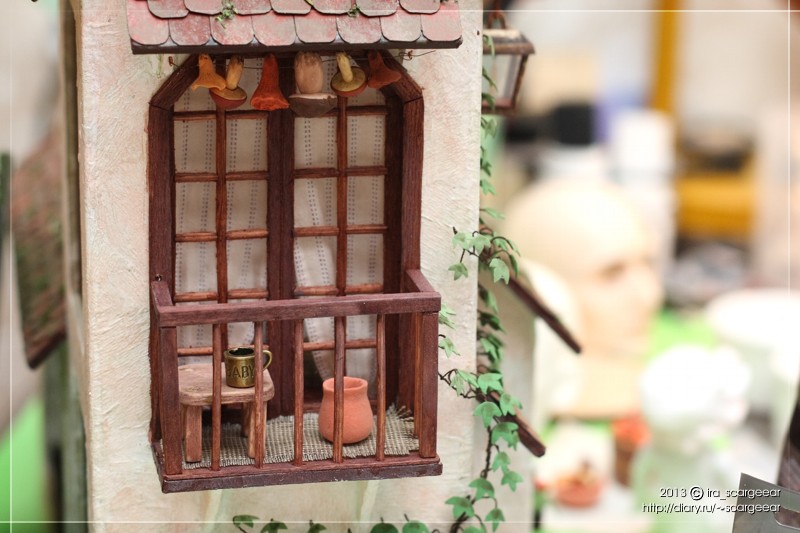
Yes, I know that the exhibition is in the spring, and we have mushrooms and pumpkins here - but I strongly associate mice with housekeeping and thriftiness, so the topic of the harvest was revealed.
The composition will also include a wheelbarrow and a bag of sugar from the very same photo shoot - why waste it))
Well, that's all, the work is finished. See photos of Manyuni in the entourage 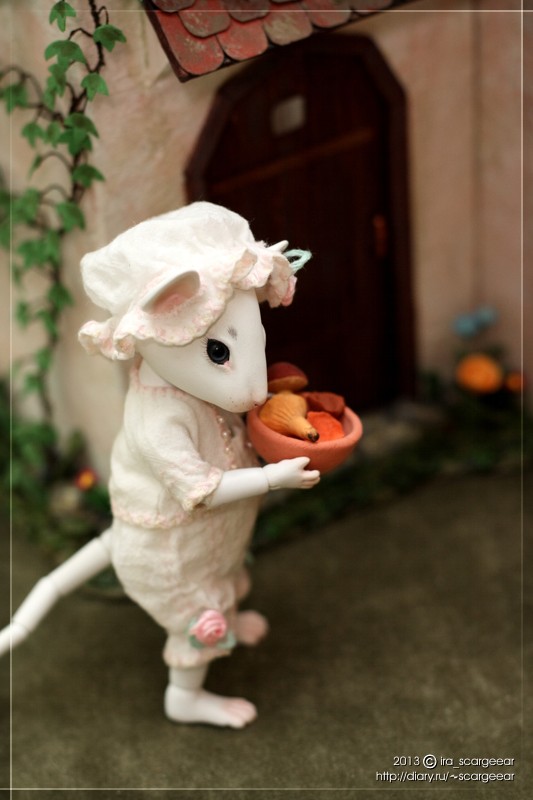
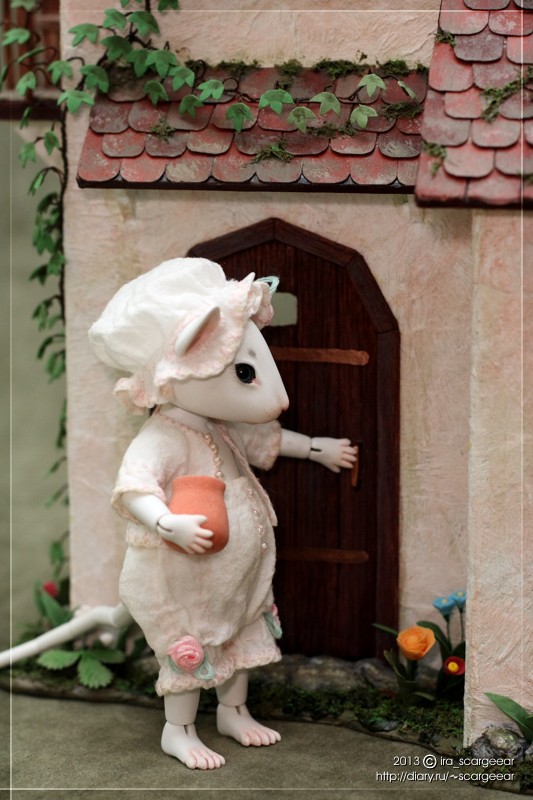
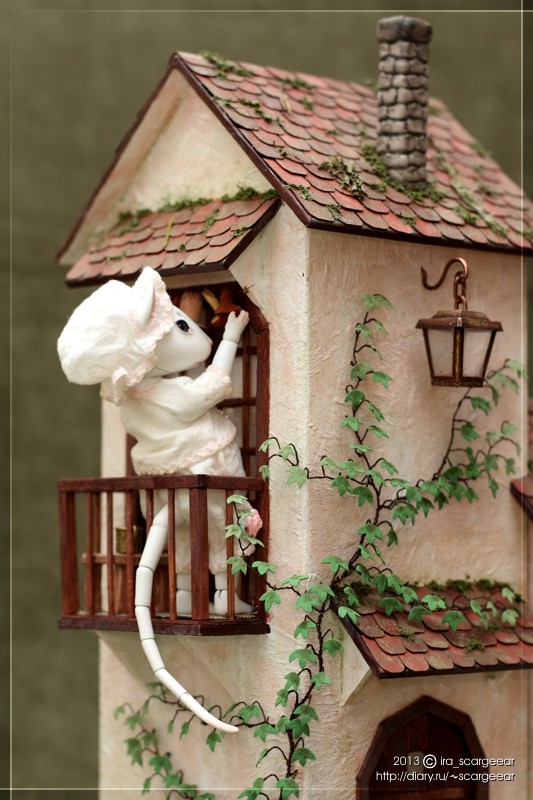
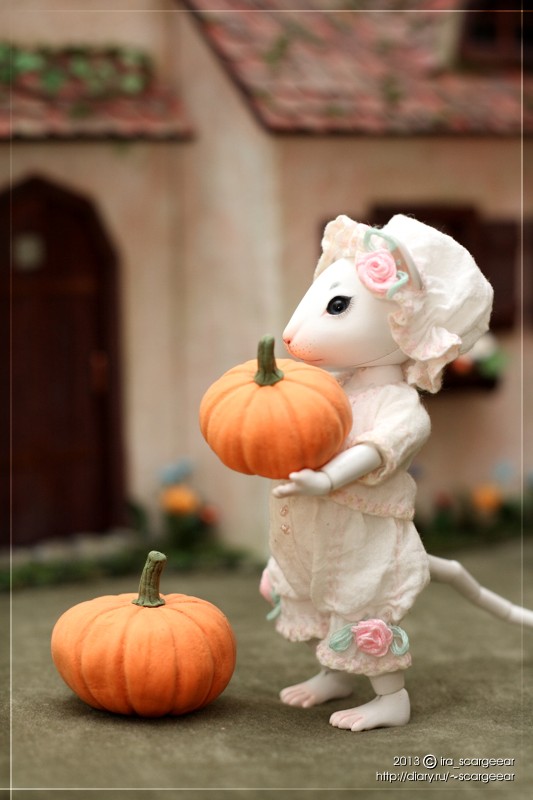
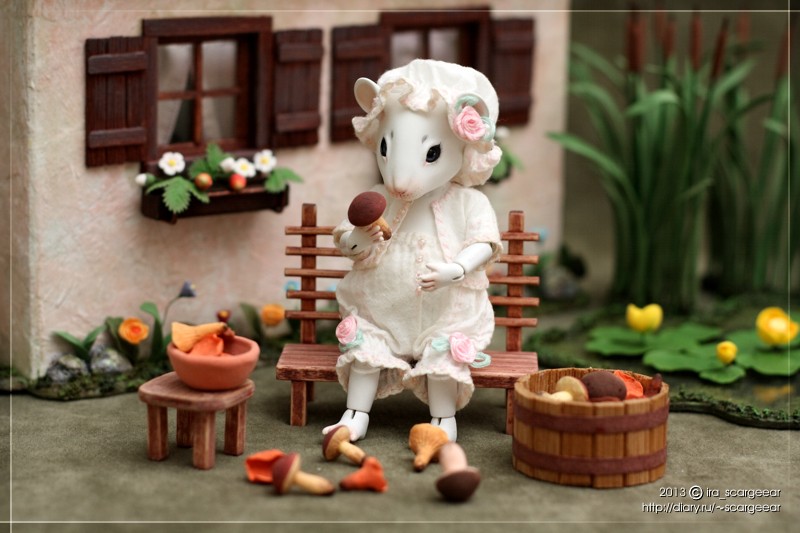
![]()

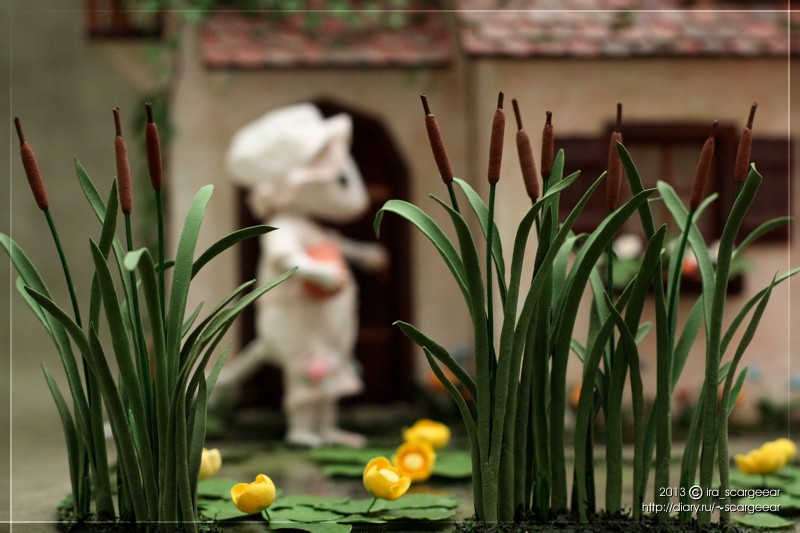
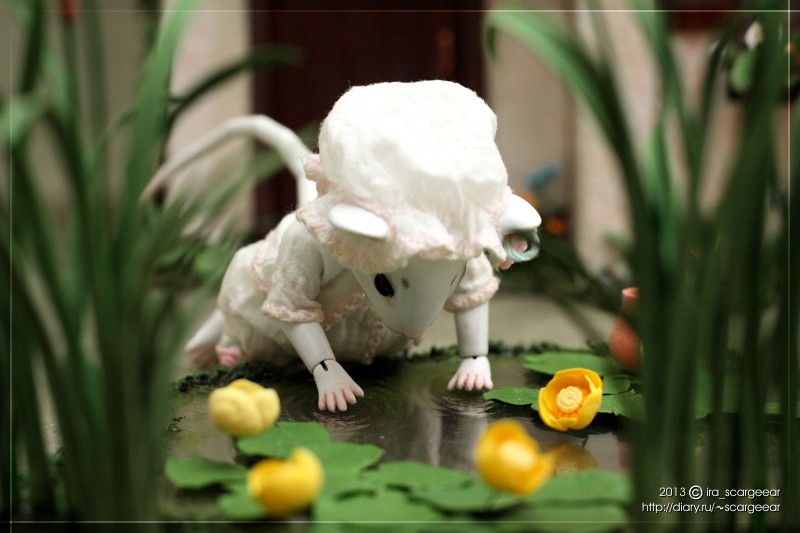

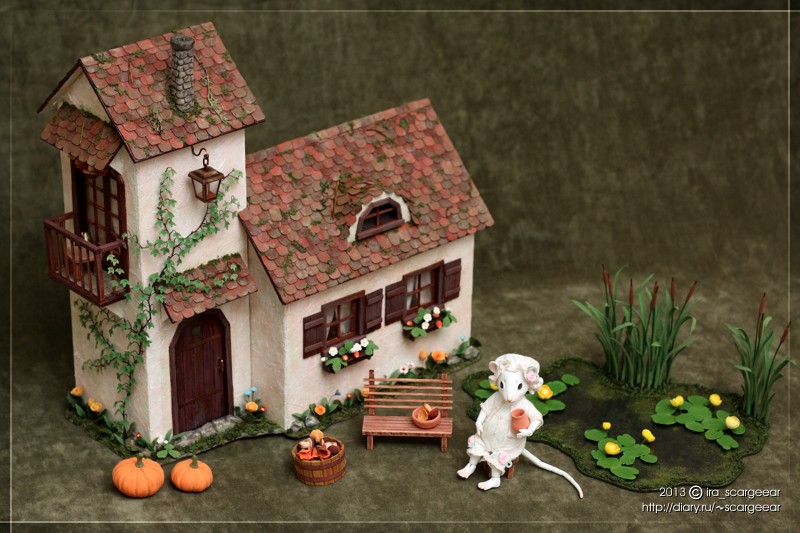
When buying a large household appliances, food, shoes and other goods in the house there are packages that must be stored until the warranty period expires. Then they can be taken out to the trash, but there are more constructive solution- make them interesting decorations for the interior of the children's room, gifts. Ideas for what can be made out of cardboard come spontaneously. They are pushed by the forms of packaging materials, the need to complement the gift unusual shape packaging or an interesting postcard.
As a rule, cardboard is remembered when it is necessary to make a carnival costume, which must keep its shape.
Dinosaurs, tractors, maize workers, robots, Cell Phones- such full-length and symbolically made costumes will please the kids. They are necessary not for carnivals, but for the game. With the help of such costumes, children can be captivated new game, learn new livers, poems with them. Everything that kids fail to learn under the strict supervision of their parents, they will remember better in a playful way.
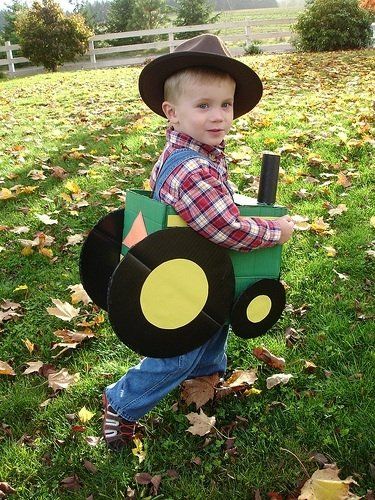 As a rule, cardboard is remembered when it is necessary to make a carnival costume, which must keep its shape.
As a rule, cardboard is remembered when it is necessary to make a carnival costume, which must keep its shape. 
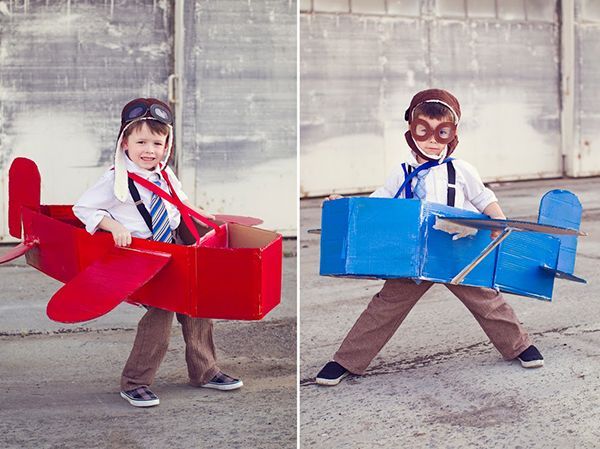
Costumes of knights, gladiators, historical figures are more suitable for studying history. True, such costumes are more complex in execution. Cardboard can be painted with gouache. The only drawback of this paint is that it gets dirty even after drying. It is better to glue boxes made of corrugated cardboard, from which voluminous costumes are made, with colored paper.
For decoration, you can use large buttons, badges and other light elements made of wood or plastic.

What can be done from colored cardboard with your own hands
Colored cardboard is not very durable, it is better to use it for making postcards, gift boxes.
Do-it-yourself cardboard postcard
A postcard according to this sketch is made from two sheets of contrasting cardboard. Lighter cardboard should be smaller than bright cardboard on each side.
 A postcard according to this sketch is made from two sheets of contrasting cardboard.
A postcard according to this sketch is made from two sheets of contrasting cardboard. - The light sheet is folded in half.
- Stepping back from the edge 2 cm, on outside sheet, it is necessary to outline a line 6 cm long. At a height of 3 cm from the first line, a strip parallel to it is drawn, of the same length.
- Above it, after 2.5 cm, the next line 4 cm wide is outlined.
- The third, final, line will be at a height of 2 cm from the previous one. Its length is 2.5 cm. All outlined lines are cut through.
- Now they need to be turned inside. To make them look like a stack of gift boxes, they must be decorated with longitudinal strips of contrasting paper with small foil elements glued on.
- The edges of the card are also decorated with shiny stripes.
- The letters with the name of the holiday to which the postcard is timed are cut out of foil or velvet paper and pasted onto a cardboard base.
- It remains only to glue the decorated light sheet of cardboard onto the colored one. They fold upside down.
- The corner elements of a larger sheet are cut out in squares so that when its edges are bent to the outside of the decorated one, a neat frame is obtained.
On the outside of the resulting address, you can stick a holiday symbol (tree, date) or the word “congratulations”.
Gallery: cardboard crafts (25 photos)

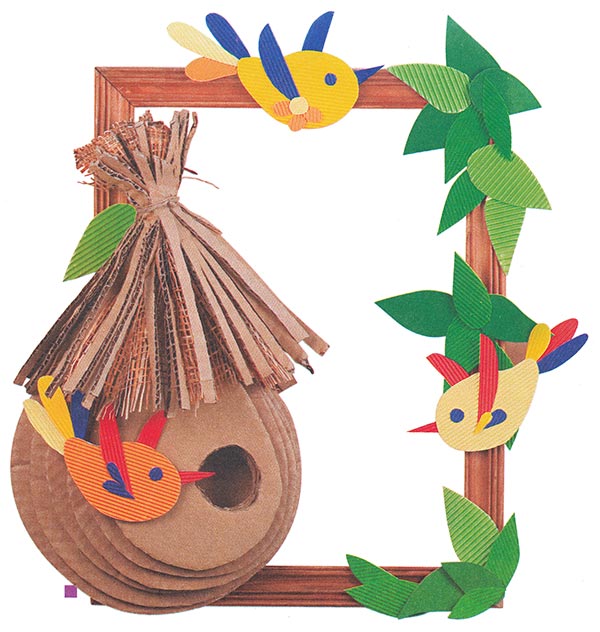
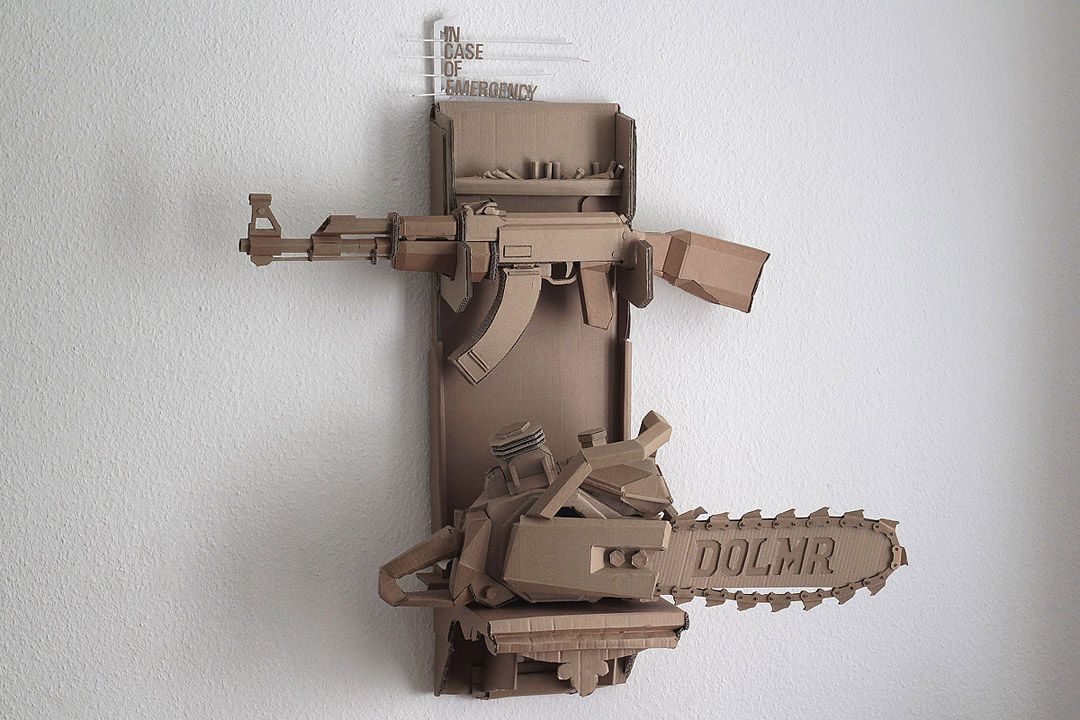
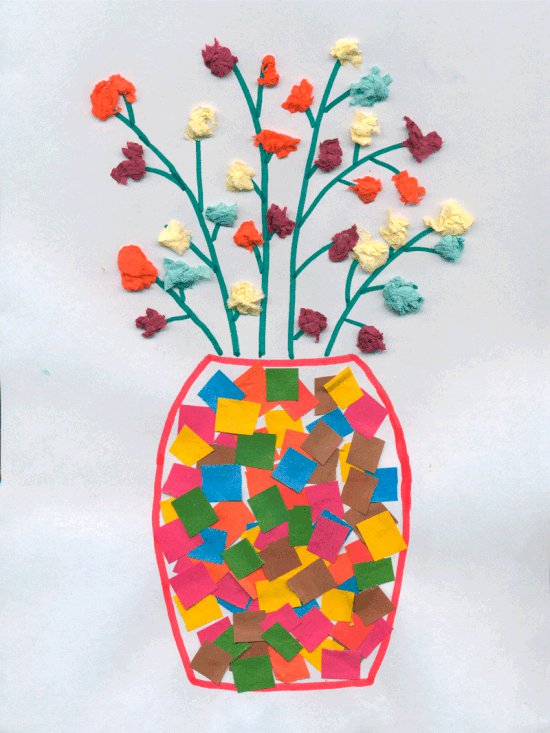
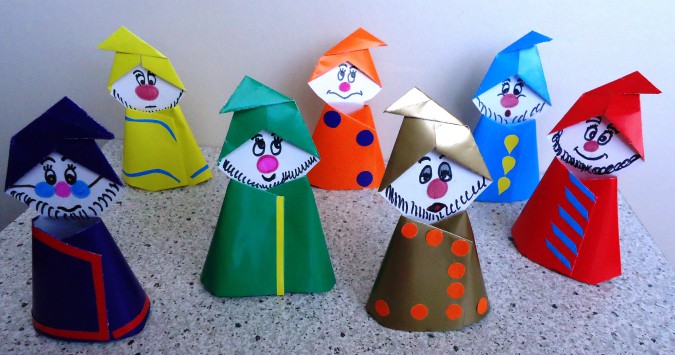
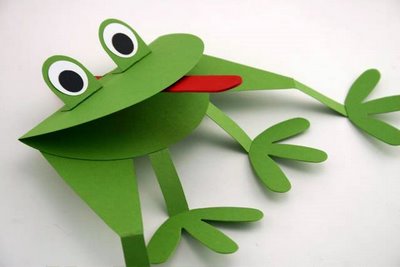

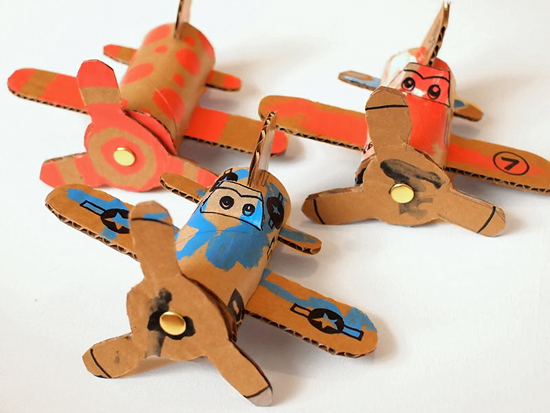
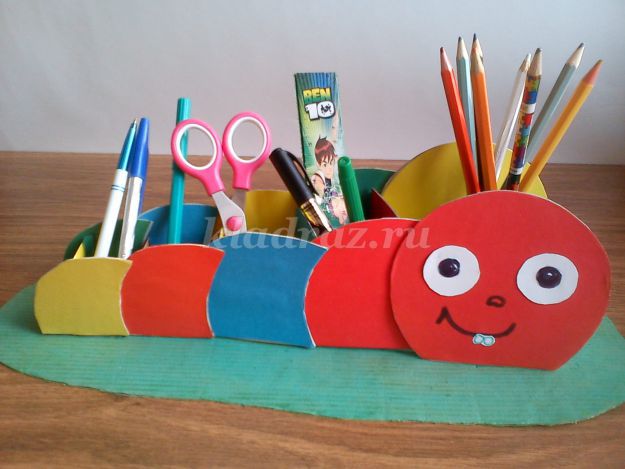
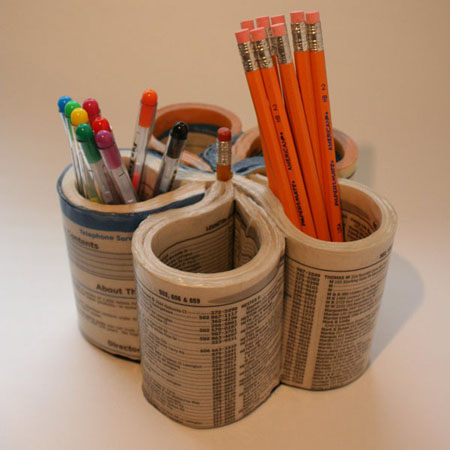

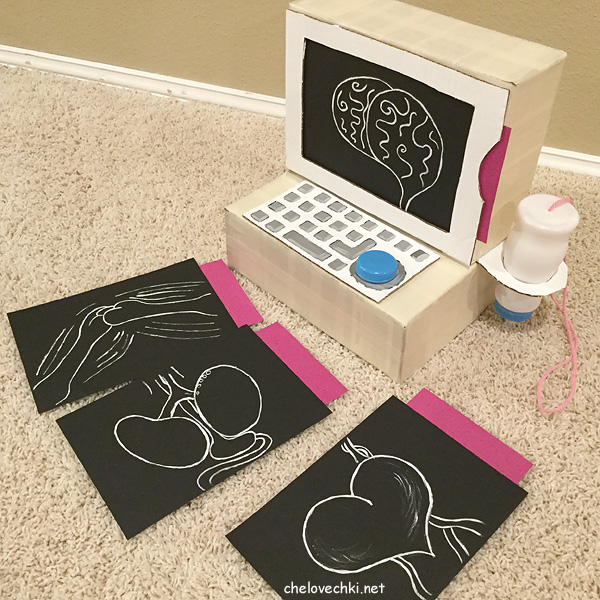
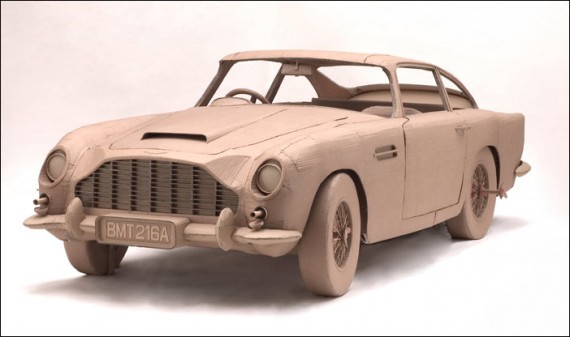
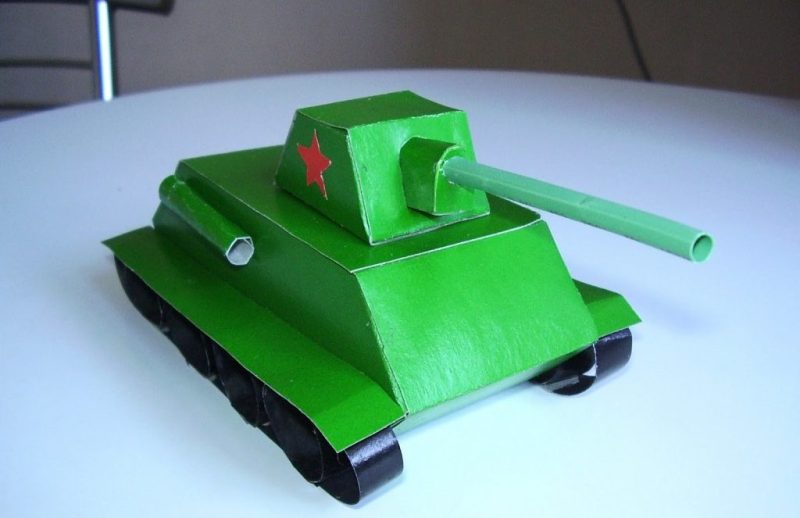
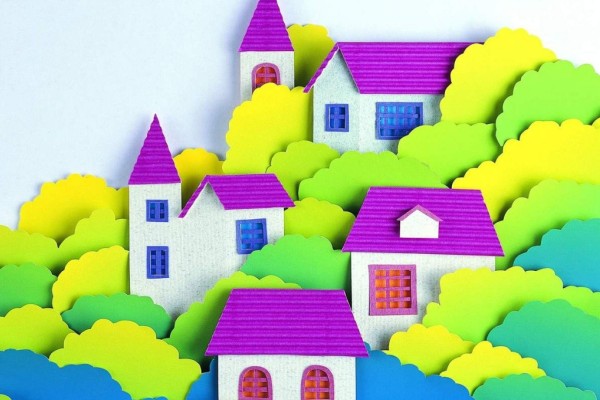
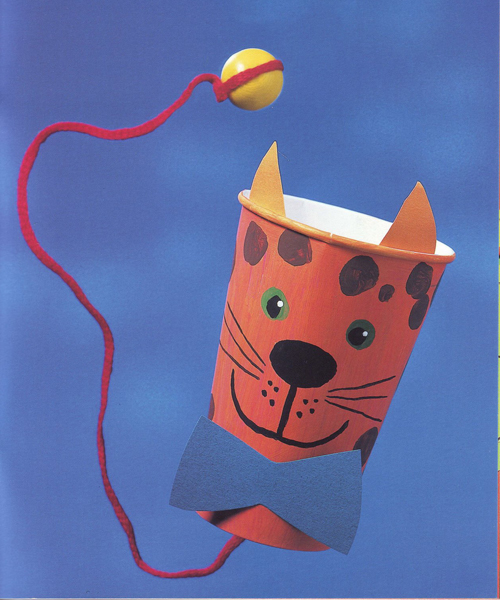

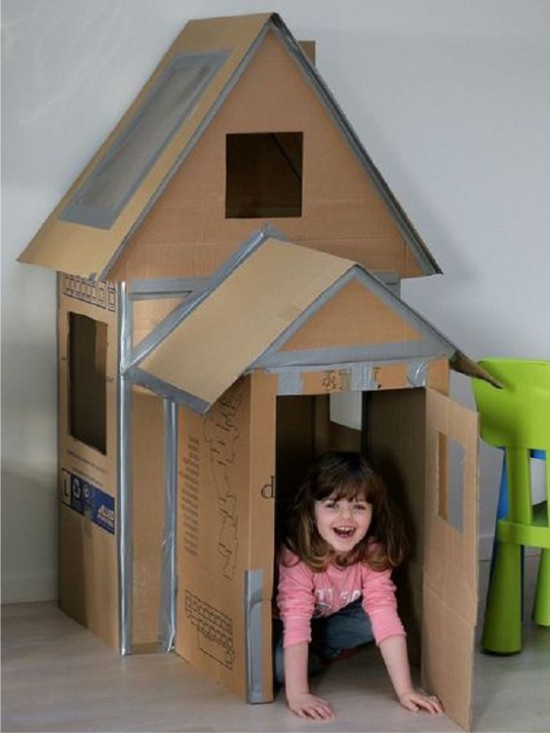
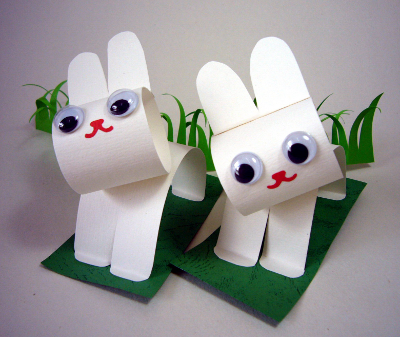
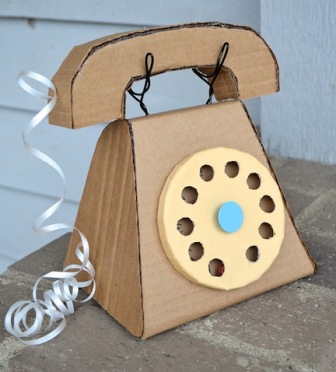
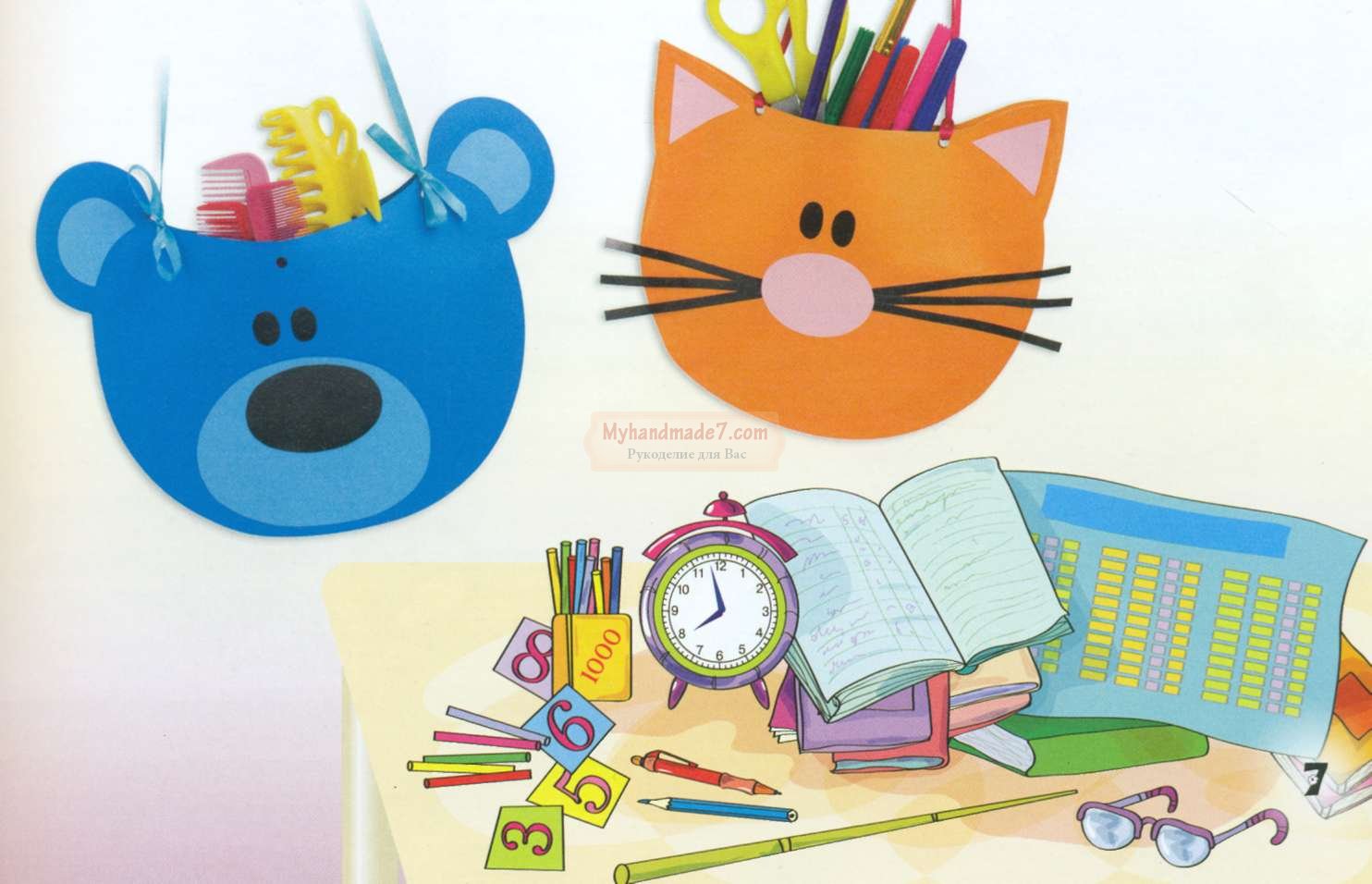
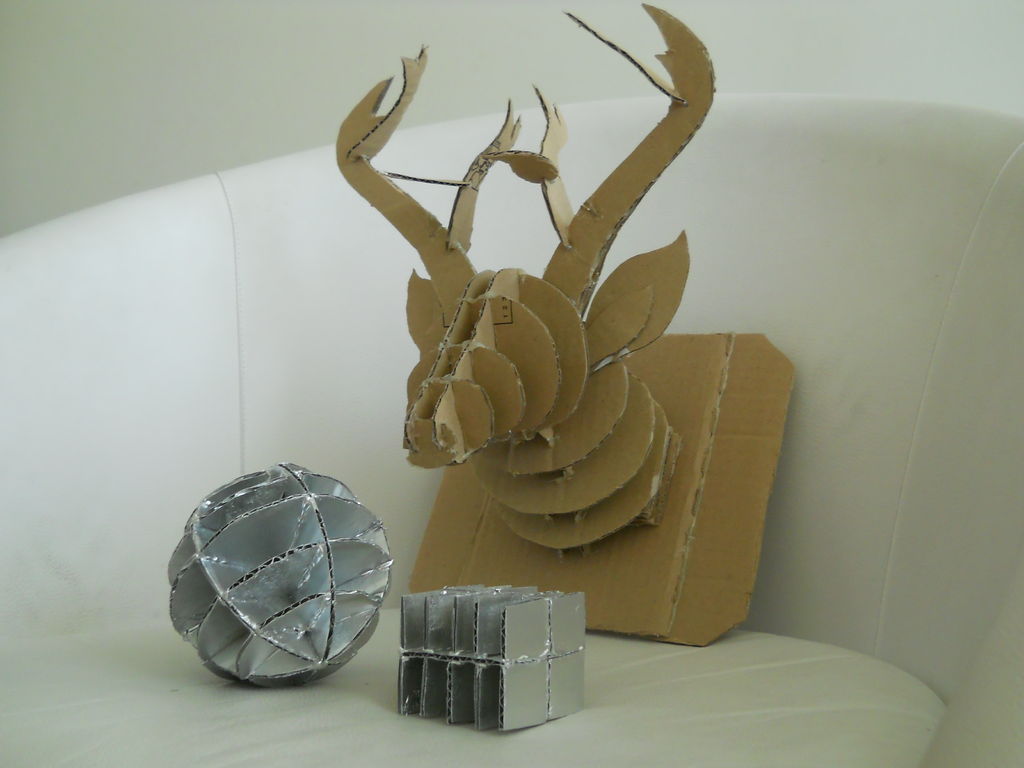
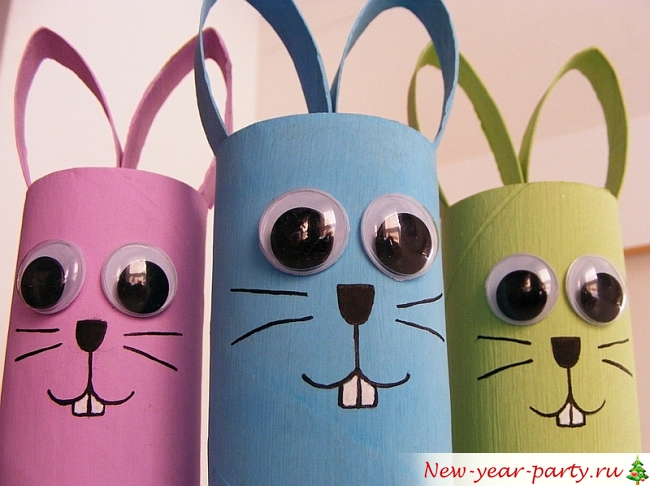

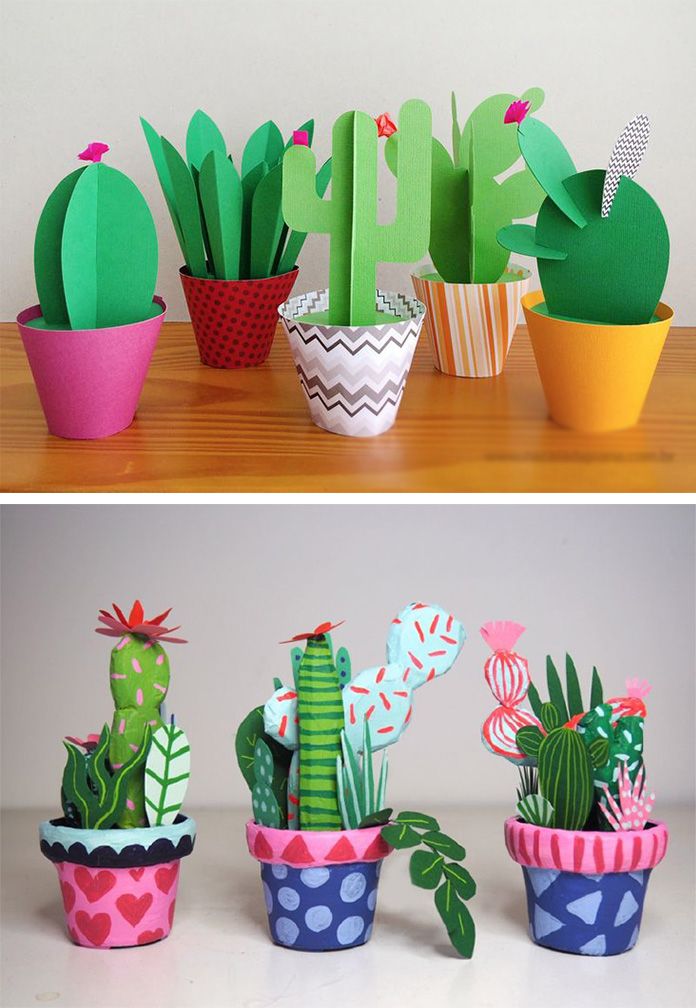
![]()
A book-toy for a child made by parents
When using cardboard, painted on both sides, you can make a book for a child with three-dimensional elements. To make the base of the protruding elements, the same strip cutting technique is used as when creating a postcard.
 When using cardboard, painted on both sides, you can make a book for a child with three-dimensional elements
When using cardboard, painted on both sides, you can make a book for a child with three-dimensional elements Crafts from cardboard tubes
Thick cardboard tubes are the most fertile material for creating home decorations. They can be cut with a construction knife into elements of the same length. This allows you to create with glue gun furniture that can serve a person in Everyday life. For an open gazebo from cardboard pipes, you can make a table and chairs at no extra cost.
- Sitting will require 64 pieces of pipes, 38-40 cm high - this is standard height chairs.
- The tubes are glued 8 pieces in a row. There are also 8 such plates. They must be glued together.
- To form the armrests, pipes with a height increased by 20 cm will be required. They are also in a row of 8 pcs. Each armrest consists of two rows. 58-centimeter elements will require 32 pieces.
- From 15 80-cm elements, the back of the chair is glued together.
- Tubes glued together form the base of the table. A worktop made of laminated thin fiberboard or glass is glued to it.
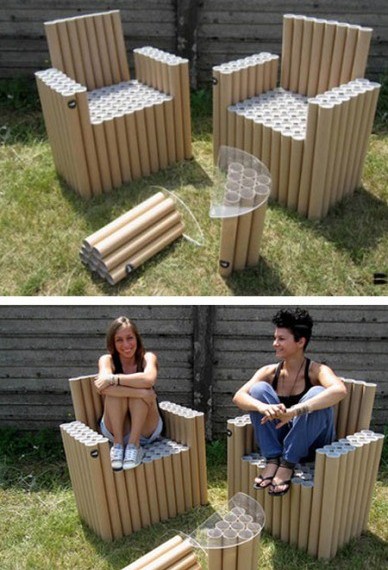 For an open gazebo from cardboard pipes, you can make a table and chairs at no extra cost.
For an open gazebo from cardboard pipes, you can make a table and chairs at no extra cost. curved bench
For the manufacture of this type of furniture, you will need not only cardboard, but also pressed wood.
- Two identical parts are cut out of wood. They will serve as the legs of the bench.
- When using tubes different diameter, in the legs it is necessary to drill the appropriate holes for them. Their height varies depending on the idea. For the seat to be comfortable, the line of holes should be smooth.
- The length of the tubes is chosen arbitrarily.
- Lubricated with assembly or carpentry glue, the ends of the tubes are inserted into the holes.
- Wooden bases are strung on tubes. This bench will look more interesting if the edges of the tubes protrude a little.
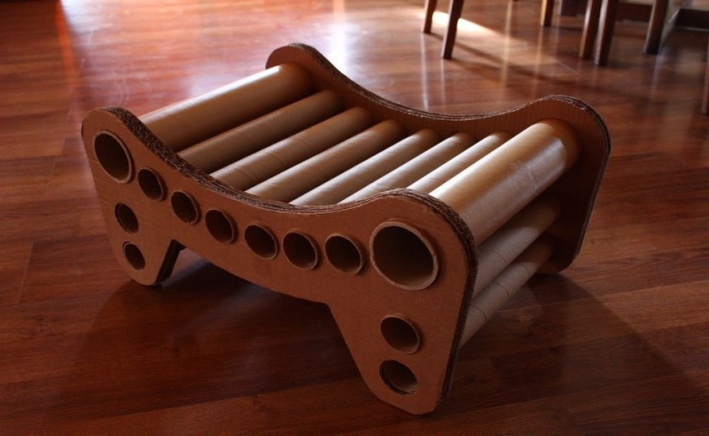 For the manufacture of this type of furniture, you will need not only cardboard, but also pressed wood.
For the manufacture of this type of furniture, you will need not only cardboard, but also pressed wood. Such a bench will decorate not only the gazebo in the garden, it will become indispensable in the hallway of the apartment and even in the living room. It can also be used in the kitchen when peeling potatoes.
Glowing openwork hemisphere
You can use this decoration in landscape design by installing it in front of a homemade waterfall or illuminated fountain or under a lantern street lighting. Thanks to the mirror used for the base of the structure, the light will be reflected, creating the effect of glowing from inside the ball. In the absence of external light sources, the hemisphere can be used as a candlestick.
For manufacturing, you will need cardboard thick-walled tubes, a large round mirror, glue and a varnish that protects against moisture.
 You can use this decoration in landscape design by installing it in front of a homemade waterfall or illuminated fountain.
You can use this decoration in landscape design by installing it in front of a homemade waterfall or illuminated fountain. Preparation method:
- Tubes of different diameters are cut into circles with a width of 3 cm.
- Before installation, each element is varnished on all sides in several layers. This preparation can take a long time.
- The assembly of the hemisphere begins with gluing the elements of the bottom row to the mirror surface.
- At the end of the first row, the only element with the largest diameter is glued.
- A frame is created around it from the alternation of narrow and medium elements with a slight shift inward.
- Further work continues in a circle. The first few rows have a slight deviation from the vertical inside the sphere.
- When the wall is equal in height to the largest structural element framed by the frame, the bevel will be steeper.
- The top center ring is installed last.
This openwork decoration will glow not only in the evening, the sun's rays will also enliven it.
Teremok for a baby
Smooth cardboard tubes are very similar to logs. Of these, it is much easier than to make a teremok for a child from wood. It will be much more interesting than the cloth tent that commercials impose on parents.
- To " log house» turned out to be spacious, it is enough to take tubes 120 cm long.
- It is necessary to make slots in the tubes, at both ends, equal in width to the diameter. The tightness of the tubes to each other depends on the depth of the holes.
- It remains to fold the house and decorate it with a roof made of thick corrugated cardboard.
- The door and windows can be cut through after assembling the house, or you can form openings from shortened pipes in the process of folding the elements.
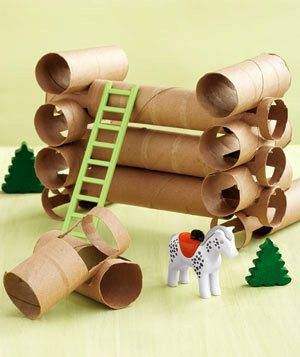 Smooth cardboard tubes are very similar to logs
Smooth cardboard tubes are very similar to logs By the same principle, you can assemble fabulous houses for dolls and other toys. Only the diameter of the pipes needs to be chosen smaller. And the material may not be so dense.
A few more ideas for using cardboard tubes in the interior
There are many practical applications for cardboard tubes with strong thick walls. They are used as organizers for pencils, pens and other necessary items. They make shelves for equipment, for storing clothes and soft toys.
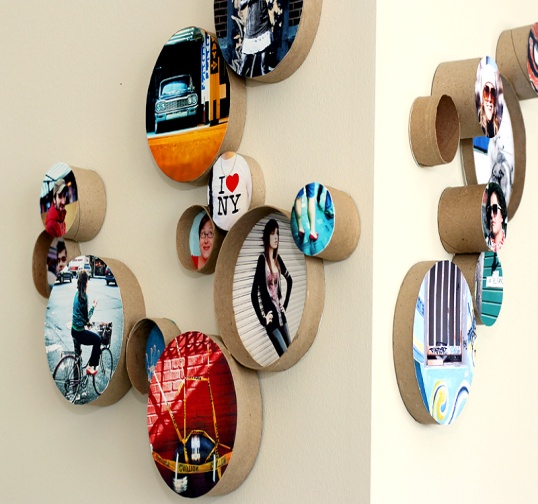 Many practical applications for cardboard tubes with strong thick walls
Many practical applications for cardboard tubes with strong thick walls 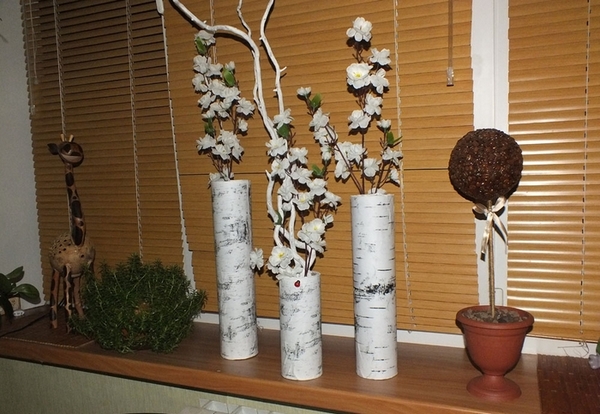
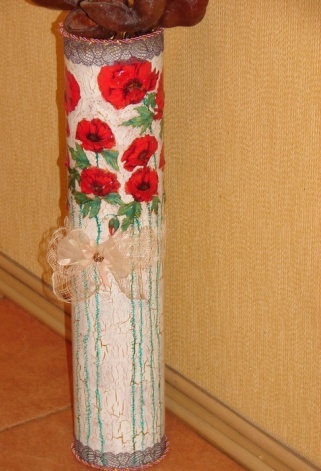
Crafts from white cardboard
The simplest white cardboard crafts are applications. To make them, you need a sheet of white cardboard and a colored base. Cut out the silhouettes white material they must be pasted on a colored sheet. When depicting a white poodle, bear, swan, you will need Additional materials, which will give the image texture. It can be: cotton wool, scraps of napkins, woolen fibers.
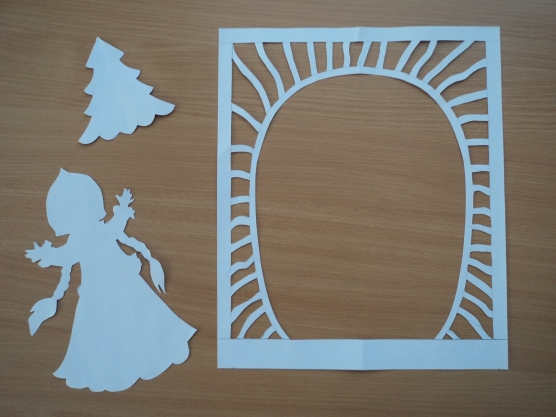 The simplest white cardboard crafts are applications
The simplest white cardboard crafts are applications It is a little more difficult to make the applique convex without the use of additional expressive means.
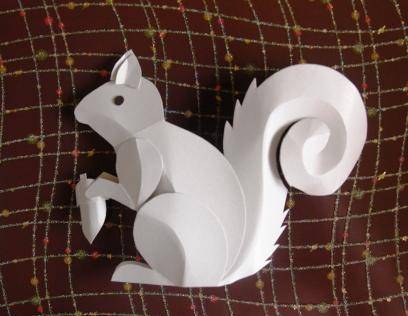 A little harder to make the appliqué convex
A little harder to make the appliqué convex On the example of a squirrel, it can be seen that in order to obtain a three-dimensional figure, it is necessary to cut individual elements, bend them and connect them together with glue.
From white cardboard, you can make a three-dimensional figurine of a hare, a white bear, a cat, a dog.
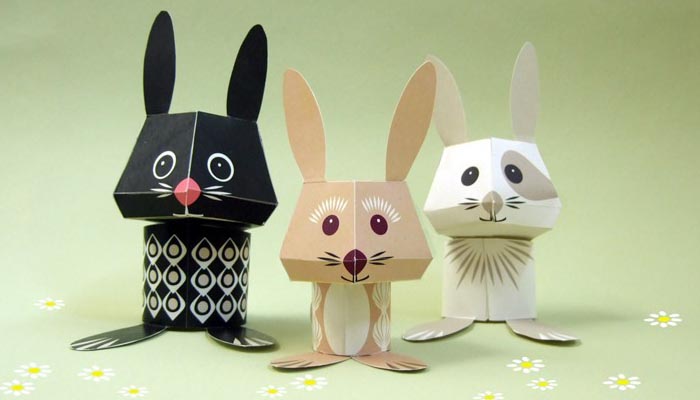 From white cardboard you can make a three-dimensional figurine of a hare, a white bear, a cat, a dog
From white cardboard you can make a three-dimensional figurine of a hare, a white bear, a cat, a dog To make the body, a strip of paper is cut off from the sheet, it is glued together with a tube. From below, details of the paws are attached to it, and from above the head. It is cut out along with the ears. To make the muzzle of the animal turned out to be convex, the workpiece is folded lengthwise and across. The fold lines converge at a point that forms the bunny's nose. It remains to draw his eyes, nose, mustache.
Silhouette paintings look very impressive.
 Silhouette paintings look very impressive
Silhouette paintings look very impressive Details cut with a blade do not adhere to the background sheet. They are fixed to a three-dimensional frame, which can serve as a candy box. The peculiarity of such interior decoration is that when the angle of illumination changes, shadows will appear on the elements that are not adjacent to the sheet, the picture will come to life, filled with new colors. If you consider a girl on a swing, it may seem that she is really swinging. This effect will be enhanced by the flames of a candle burning on the side of the image.
Spectacular decoration the mantelpiece will be a white openwork house, cut out of seven sheets of cardboard. To make it, you will need two templates with drawings.
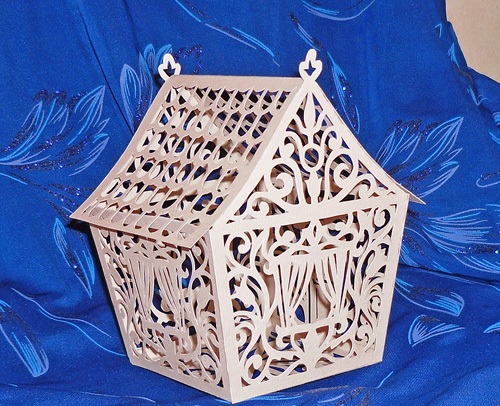 A spectacular decoration of the mantelpiece will be a white openwork house
A spectacular decoration of the mantelpiece will be a white openwork house One with the image of the decor of the walls, the second with the ornament of the roof and the lower part. Edges are added to the side walls with a pediment for gluing with details from all sides. To them, after cutting out the openwork elements, the rest of the product is attached.
What can be done from thick cardboard
Using several layers of thick cardboard, connected with glue, and decorated with a sewing seam made with thick thread on top, you can make partitions for a box with an attached lid.
It is also easy to make from thick cardboard:
- The longitudinal partition is cut from above to the middle.
- Transverse cut from below at the same distance.
- The resulting grooves are a lock, it will securely hold dense parts.
- Used as a decorative outer layer upholstery fabric- tapestry. Until it is glued onto cardboard, a beautiful button is sewn to the front of the bar.
A loop of thin elastic is glued to the lid. The treasure is ready.

A wicker vase for small things is made on the basis of a blank made of thick cardboard.
- Having drawn a heart or a circle for the bottom, you need to cut out two identical parts.
- Visually dividing the perimeter of the workpiece into equal segments, it is necessary to determine the weaving step.
- In accordance with this parameter, strips 5-7 cm high are cut out of cardboard.
- In their upper part, in the middle, round holes are made with a hole punch. They will be needed at the end of weaving to decorate the top edge.
- The lower ends of the slats are glued between the bottom blanks.
- Weaving is done from the bottom up.
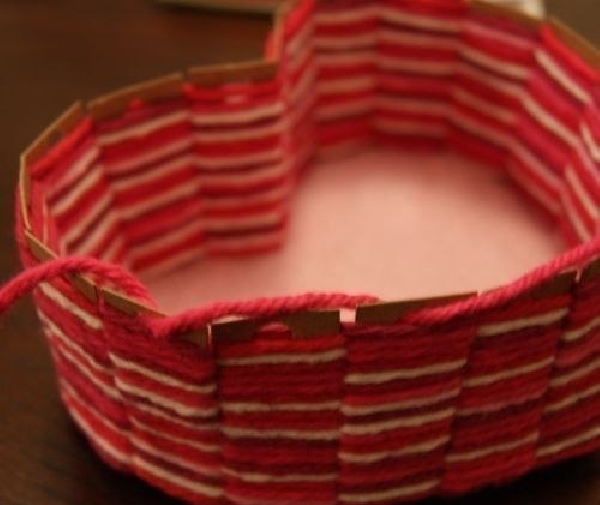 Wicker vase for small things
Wicker vase for small things What does corrugated cardboard look like and what can be made from it
Corrugated cardboard is a dense packaging material, consisting of at least three layers - two even outer and inner sinuous, creating cells. The second type of corrugated cardboard is specially made for needlework.
Large practical things can be made from packaging cardboard. For example, a house for dolls.
As a basis, you can take a box of loose cookies. To simulate the dwelling of dolls, it is enough to cut through the window and doorways. Until the end, the elements of the windows are not cut out, they can be decorated under the shutters. Lattices of window frames are glued from the inside.
The door can also be left by pasting it with colored paper. The roof is formed from the remains of cardboard.
Chest for gifts from Santa Claus - a fabulous chest
- It is made from two packaging boxes of the same length.
- The bottom is practically unchanged.
- The upper part is cut out of three parts - two semicircles and one straight piece.
- Halves of a circle are best made from one circle. It is drawn with a diameter of 2-3 centimeters more than is necessary for the side parts.
- The required size of the part is marked on the workpiece. Triangles with a base width of 1-1.5 cm are cut out of the "extra" strip.
- The teeth remaining on the workpiece are bent. The upper part of the lid of the casket will be attached to them.
- It is better to paint corrugated board after double priming. Otherwise, the colors will appear faded.
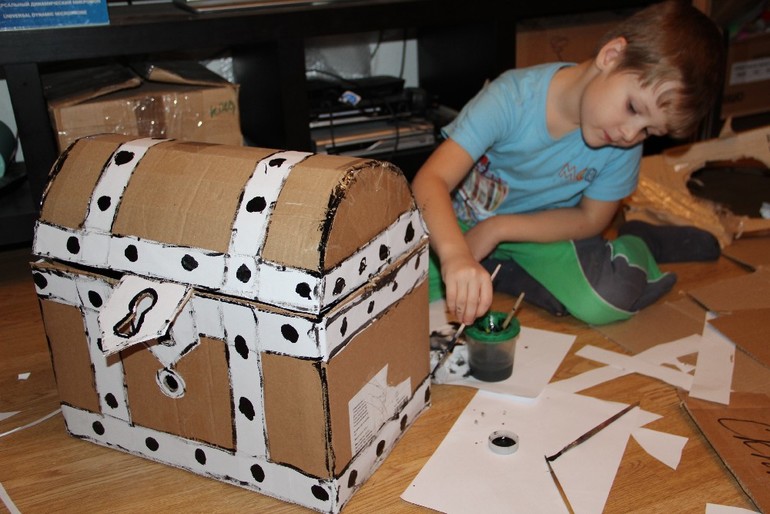
Piggy bank
Corrugated cardboard piggy bank is made without glue. It folds and is fixed at the corners from the inside with a decorative cord. At the bottom of the piggy bank, the hole is sealed with paper or postal tape.
 Corrugated cardboard piggy bank is made without glue
Corrugated cardboard piggy bank is made without glue Fake Corrugated Cardboard Fireplace
A fireplace made of cardboard is not just a decorative thing. It is meant to support the story of Santa Claus. Made before the New Year. It is hardy enough to withstand a decorated Christmas tree.
- The portal is assembled from a former packing box;
- Reinforced from the inside with slats;
- The outer part is decorated with foam elements;
- A false fireplace is attached with slats on a foam plastic pedestal;
- Dyed with decorative elements in White color with a blue tint or ivory.
 A fireplace made of cardboard is not just a decorative thing.
A fireplace made of cardboard is not just a decorative thing. 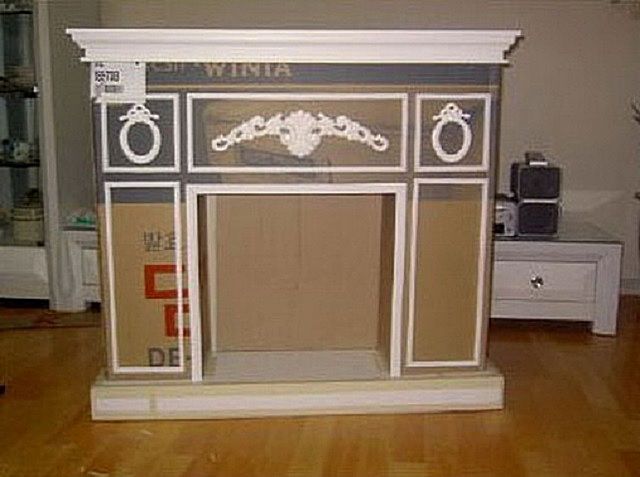
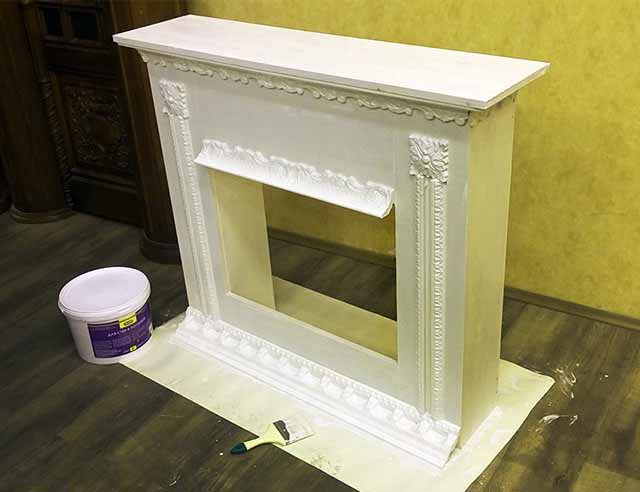
Corrugated cardboard toys will be an excellent decoration for the New Year's fireplace. Only for their manufacture is used a special - ornamental material created specifically for quilling.
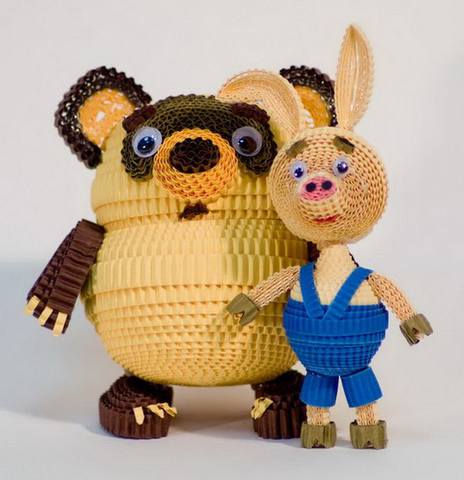 Corrugated cardboard toys will be an excellent decoration for the New Year's fireplace.
Corrugated cardboard toys will be an excellent decoration for the New Year's fireplace. Many types of cardboard can be used to make crafts. Thin cardboard is suitable for making applications, postcards, baby books. It is more advisable to use a denser one for the manufacture of stable toys. Corrugated cardboard is suitable for making scenery for amateur theatres, including home theaters. Corrugated cardboard for quilling allows you to create absolutely fantastic crafts.
Bright do-it-yourself cardboard desktop organizer (video)
Do-it-yourself cardboard spinner (video)
Attention, only TODAY!
Cardboard crafts are not only useful for development creativity your child, but also a very fun and exciting way to pass the time. And so, we offer you 20 ideas, each of which can be made from cardboard.
So, what can be done from cardboard?
You can make a boat out of cardboard
To make such a boat out of cardboard, you will need: Cardboard, any rope or thread, and a piece of fabric for the sail. And of course the mast. As a mast, you can use any branch you like.
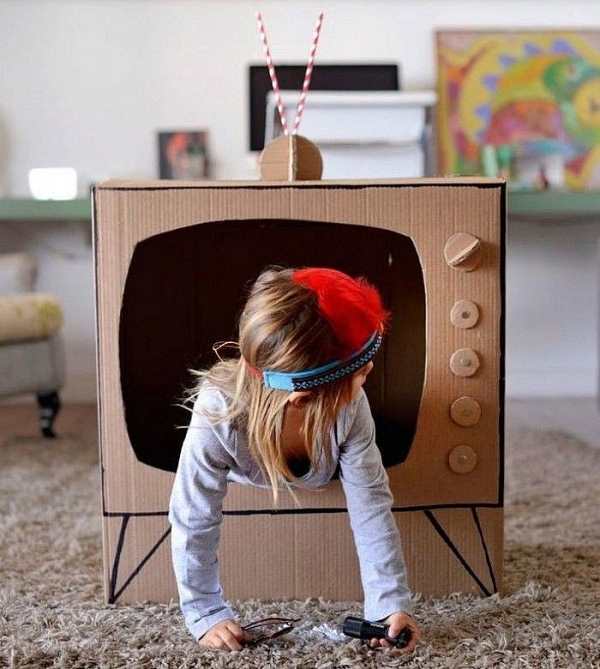
Does your child dream of being "like that aunt or uncle from TV!"? There is nothing easier. Again we use cardboard and fantasy. But in this case, it is best to take a whole box of cardboard.
Handbag
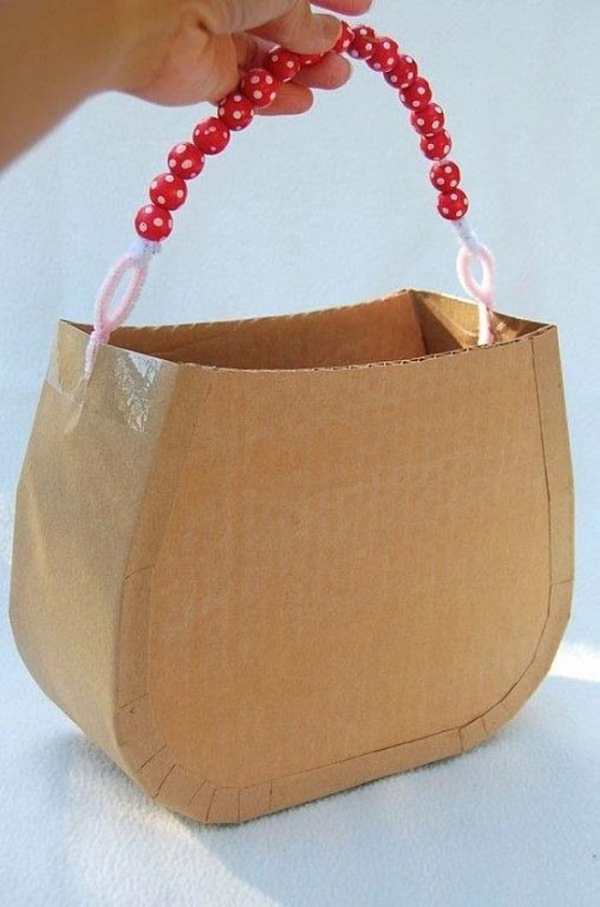
Teach your daughter how to make her own handbags. And who knows? Maybe in 20-30 years, half of the women on the planet will walk with fashionable bags that will not have the LOUIS VUITTON logo, but your last name ...
House for a cat
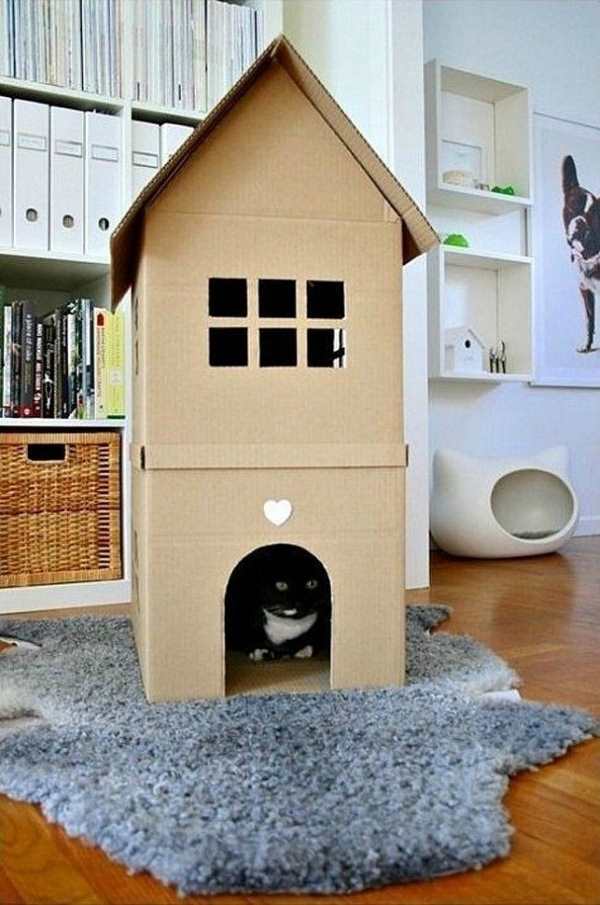
Do not forget about our smaller brothers. Cardboard can be made roomy and cozy house for cats.
Make a model of an electric stove out of cardboard
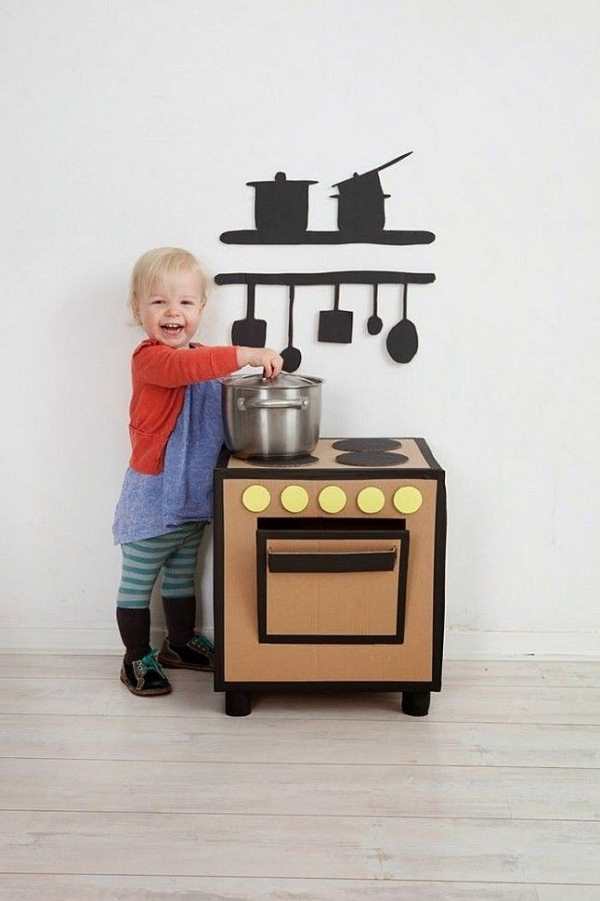
It doesn't matter if you have a boy or a girl. It will be useful for both those and those to practice cooking first on a mock-up of an electric stove. Not only will you have fun making this paper kitchen gadget, but you can also play "Kitchen" every day afterwards.
You can make any car out of cardboard
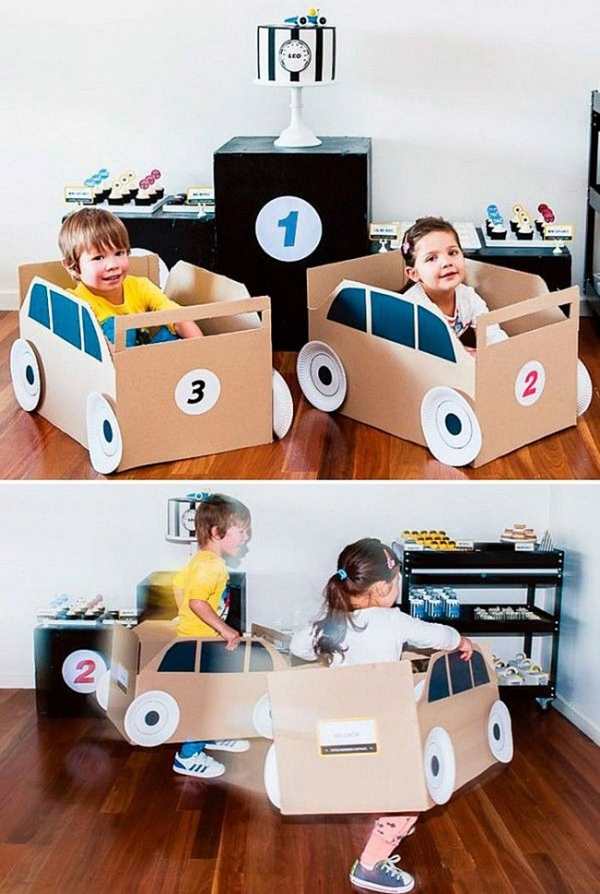
While our girls are in the kitchen preparing dinner, you can go to the garage and tinker with the car. Unfortunately, the car will also be made of cardboard.
Two-storey car park

Surely you have accumulated more than a dozen small cars. So make a big parking lot for them.
Home theater with moving figures made of cardboard

But more complex, but also more interesting option what can be made out of cardboard. Home children's theater. Here we will need not only cardboard, but also make friends with electricians to create lighting in the theater.
Phone
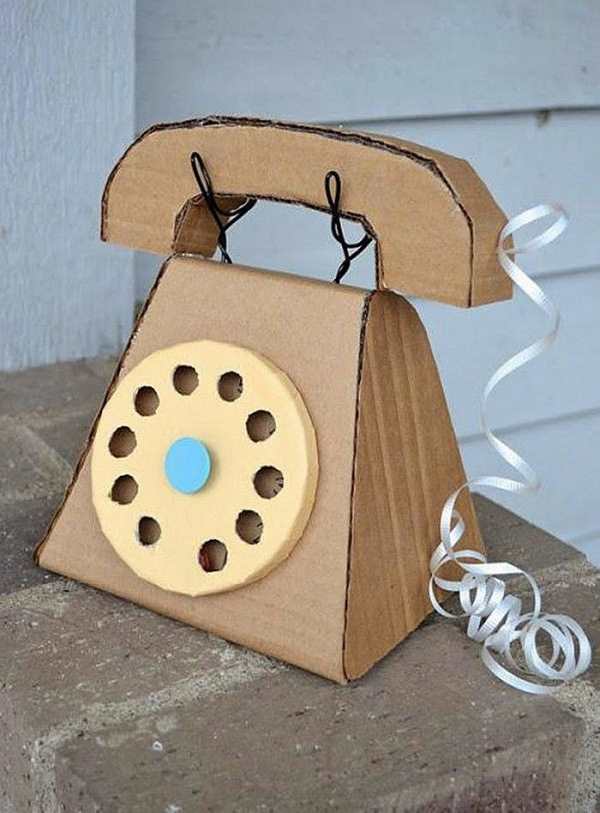
Everyone will be happy with the phone) Now you can place phones in every room and talk to your child all the time.
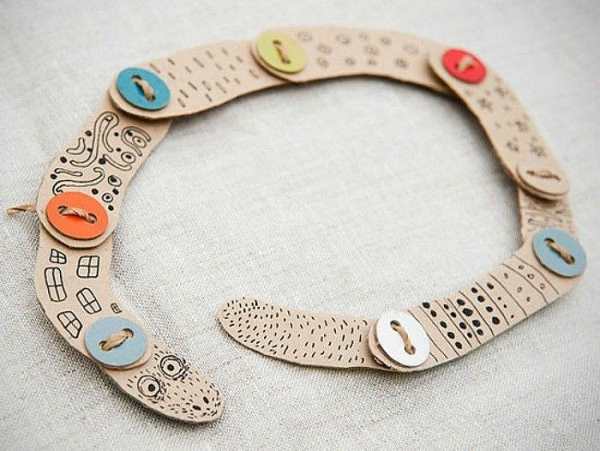
There is already a cardboard snake. Think and make other animals. And most importantly, no allergies.
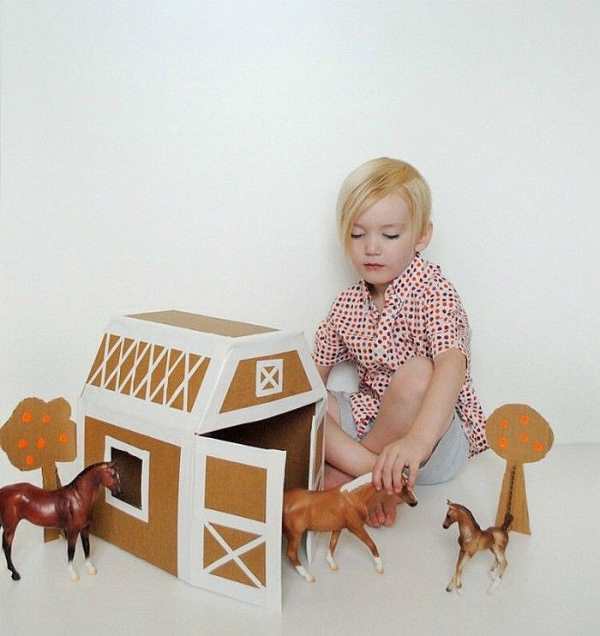
Well, since we managed to make a parking lot for cars out of cardboard, then we can handle the stable.
Aquarium
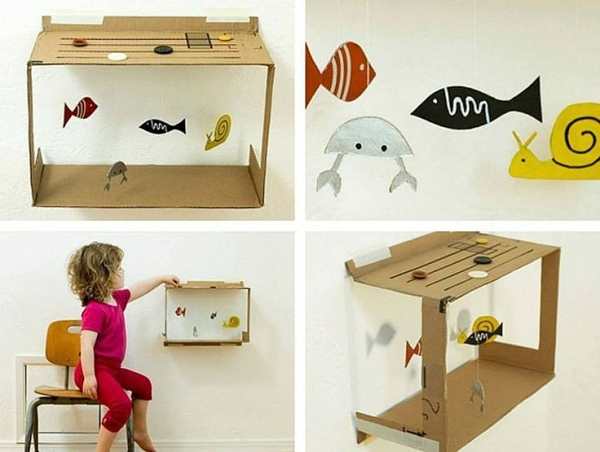
Make an aquarium with your child. With the help of the sliders at the top, the fish can be moved. BUT the background you can color in the spirit of any coral reef.
Horses, dinosaurs, whatever.
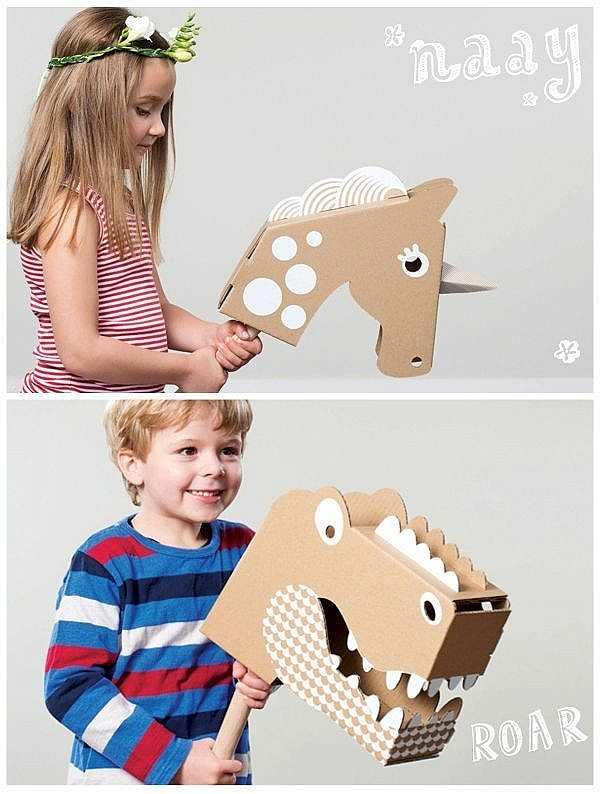
In a fairy tale, you can ride a dinosaur. Welcome to fairy tale.
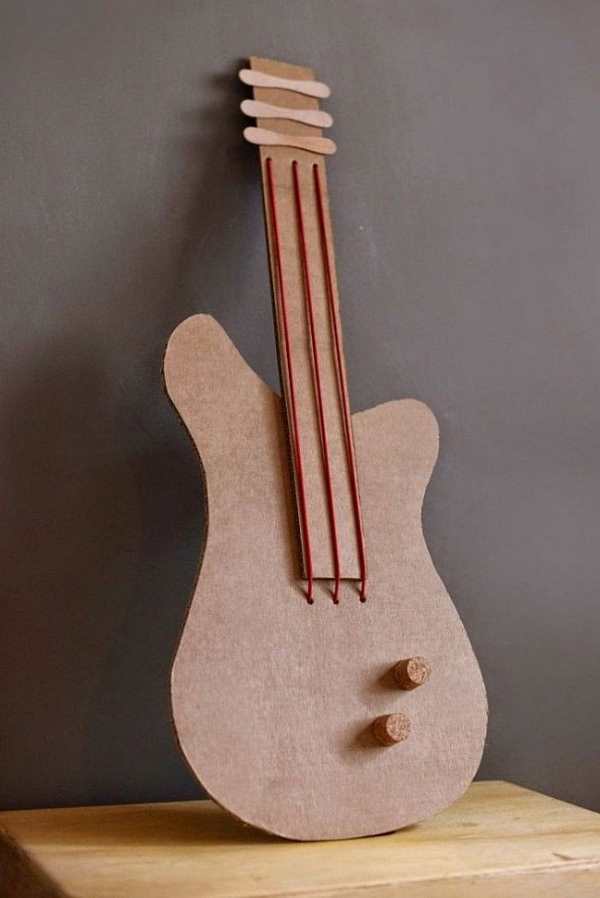
Now your child can feel like a real guitar hero and play along with their favorite performers while standing in front of the TV.
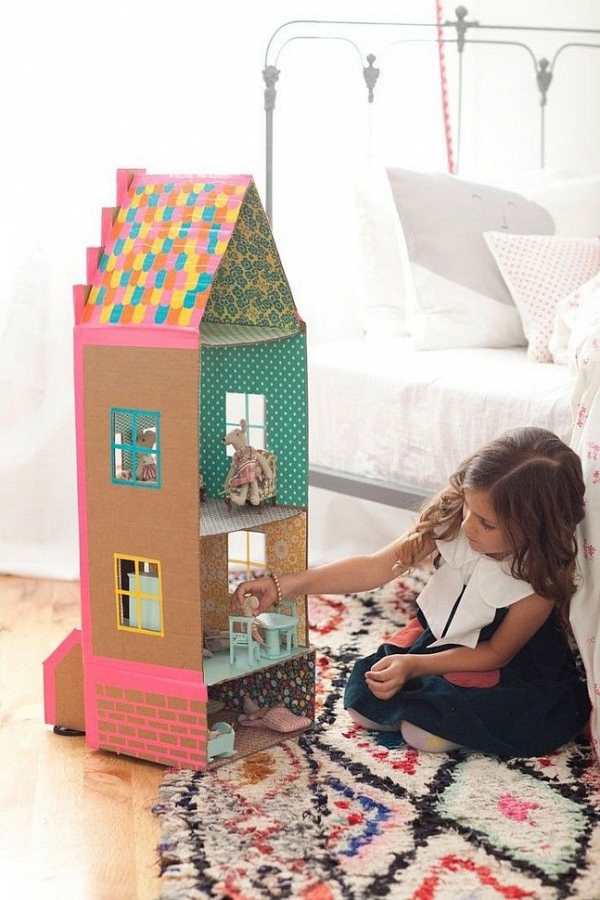
For dolls, you can build a house with a million floors, and even with a pool. In such a house everyone will be happy.
Washing machine
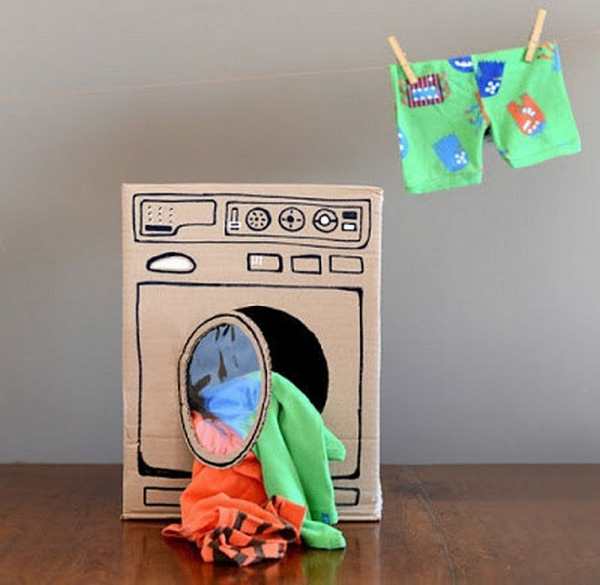
And you can make this house anyone household appliances from cardboard. It's much cheaper than the real one. Surely you already have it.
Bed for toys
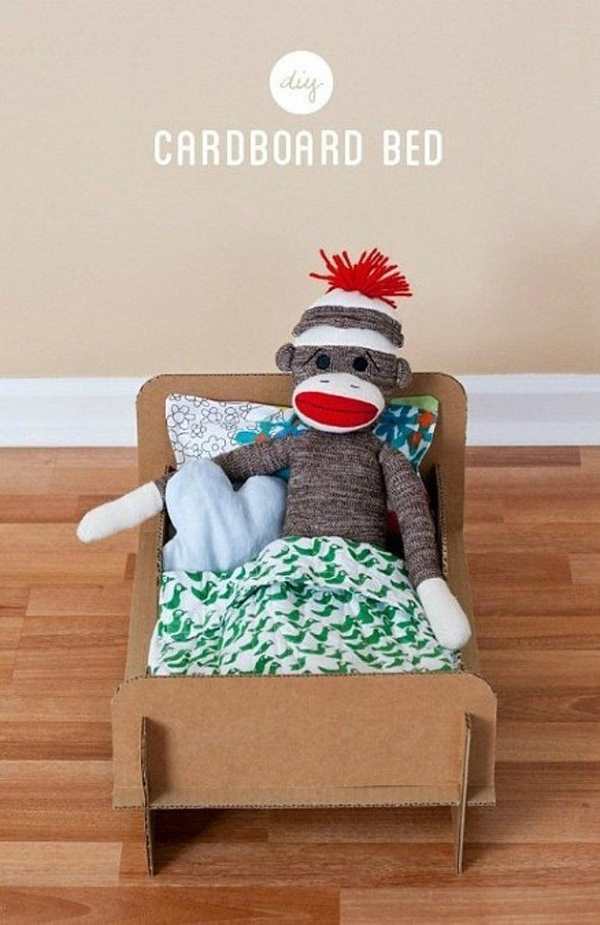
The bed will also fit perfectly into the interior of a cardboard house.
Ice cream maker or ice cream maker
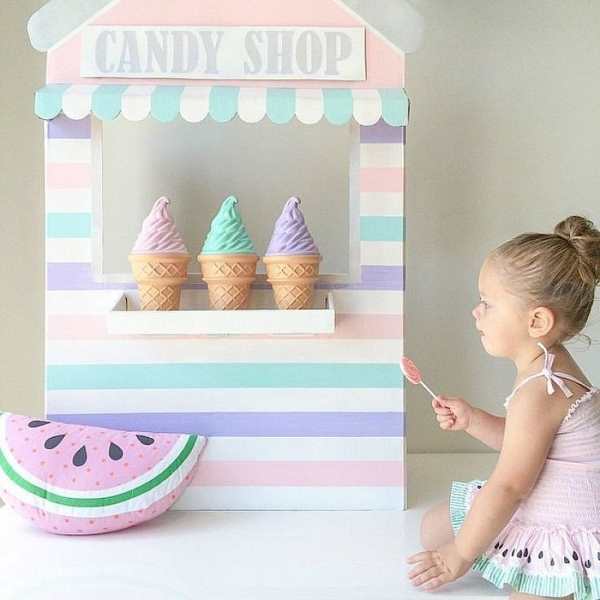
All of us in childhood dreamed of becoming an ice cream seller and just giving it to children. Now our dream has become closer) Such a counter will decorate the birthday and your child will feel really the most important on this holiday. Just replace the cardboard ice cream with a real one.
Cake
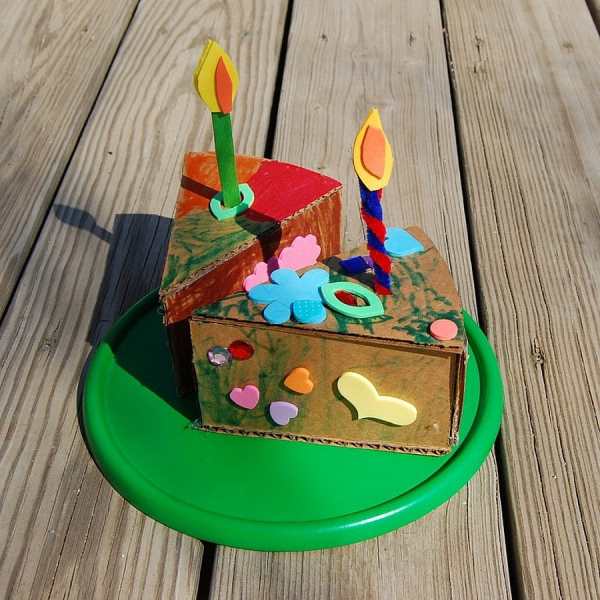
Cardboard cake will never go bad. And you can play with it. But do not forget to pamper your miracle with real sweets. If you have ideas, then write in the comments what else can be done from cardboard.


